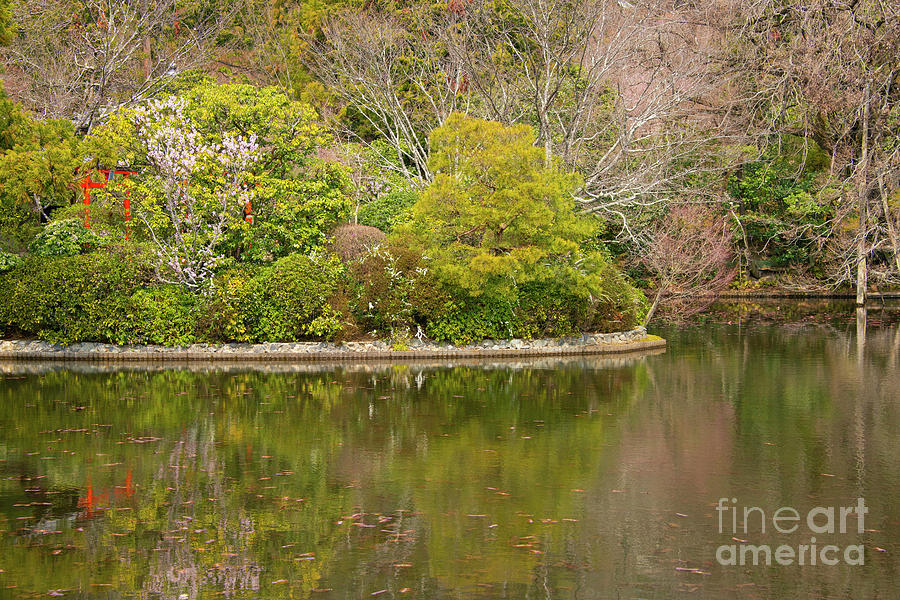APAH 250 Pieces
1/338
There's no tags or description
Looks like no tags are added yet.
Name | Mastery | Learn | Test | Matching | Spaced |
|---|
No study sessions yet.
339 Terms
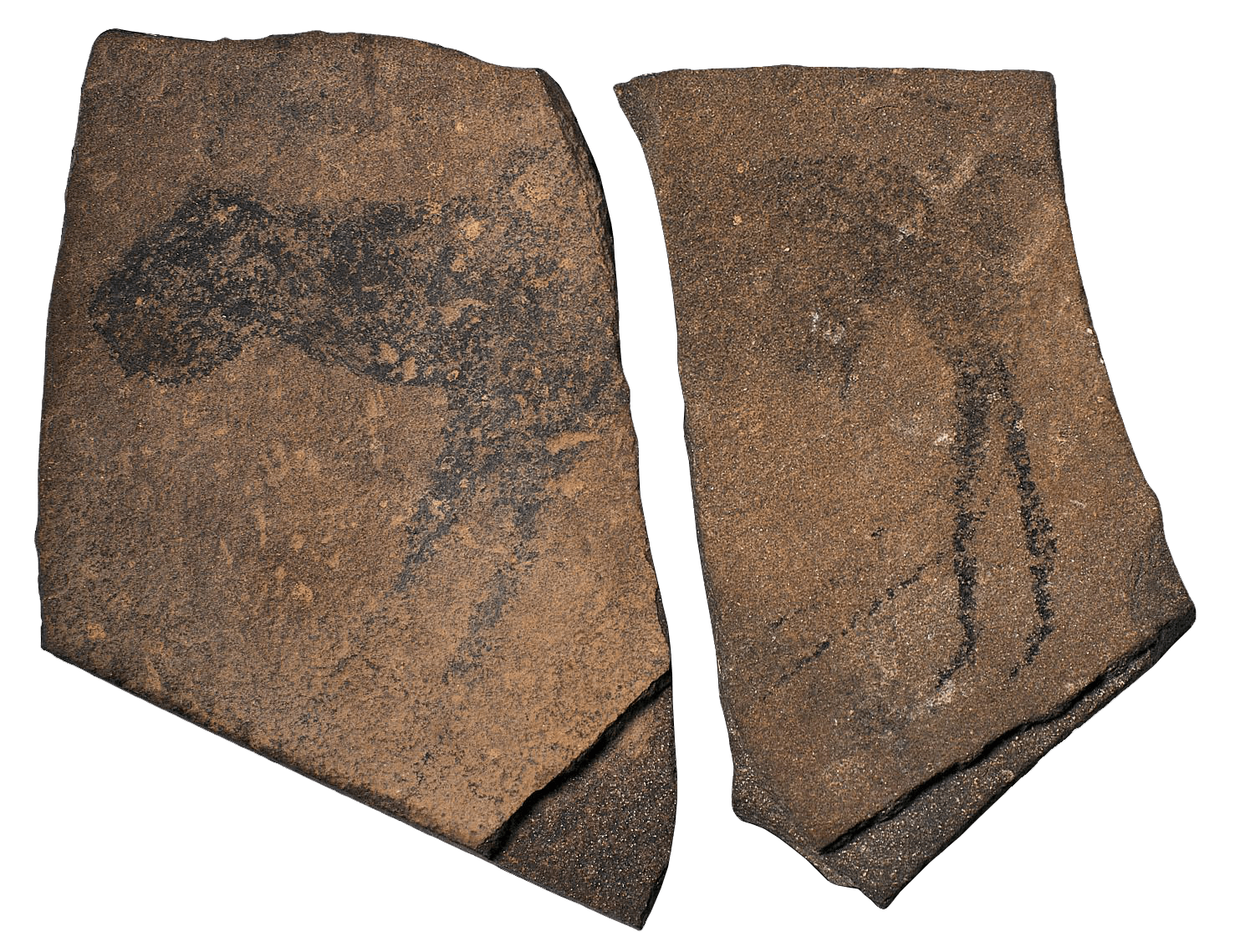
1
Apollo 11 Stones
Prehistoric African, charcoal on stone, 25,500-25,300 BCE, Namibia, 5” x 4.5”
Earliest example of figurative art
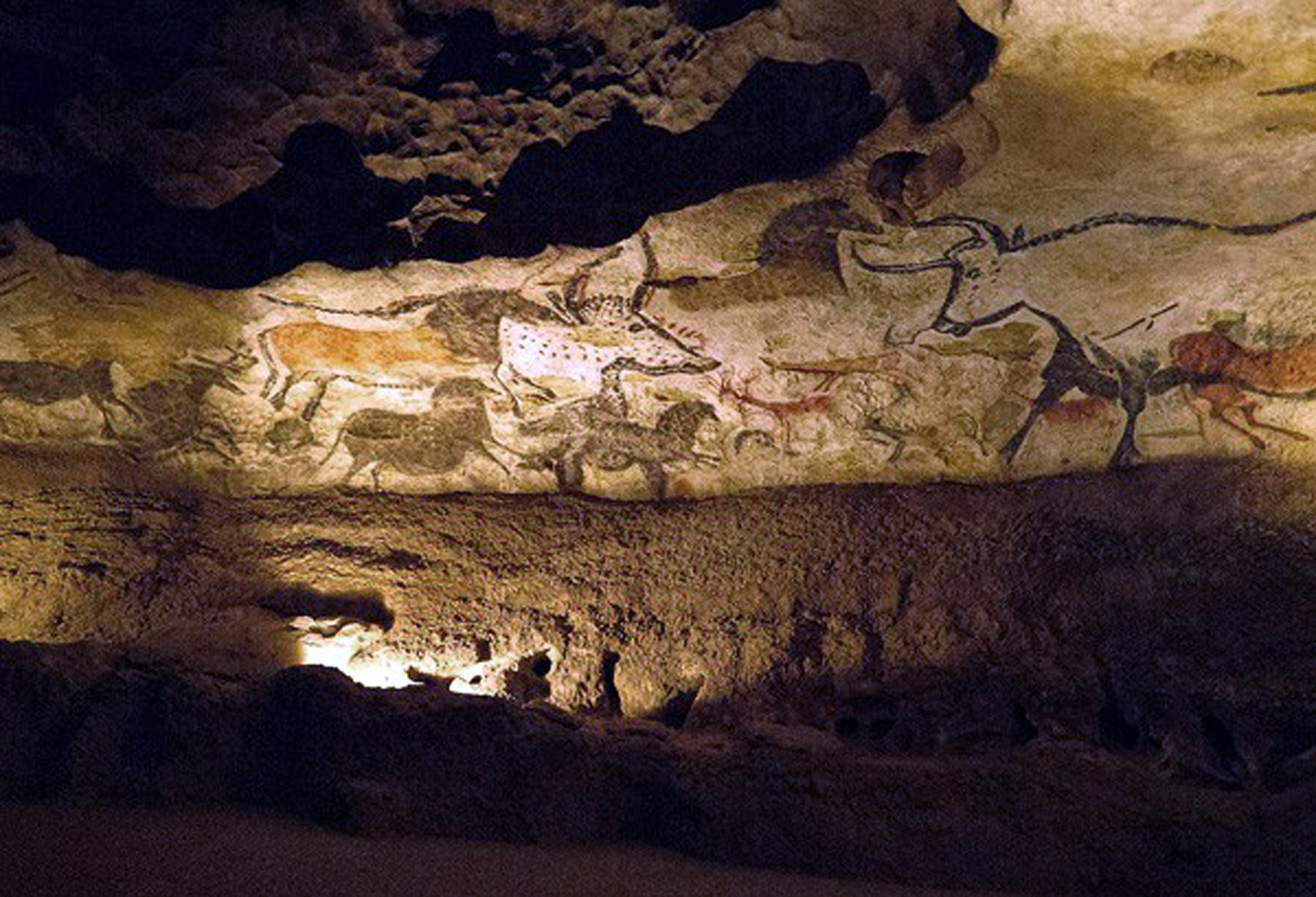
2
Great Hall of the Bulls
Prehistoric European, rock painting, 15,000-13,000 BCE, Lascaux (France), large bull: 17’
Example of naturalism and superimposing
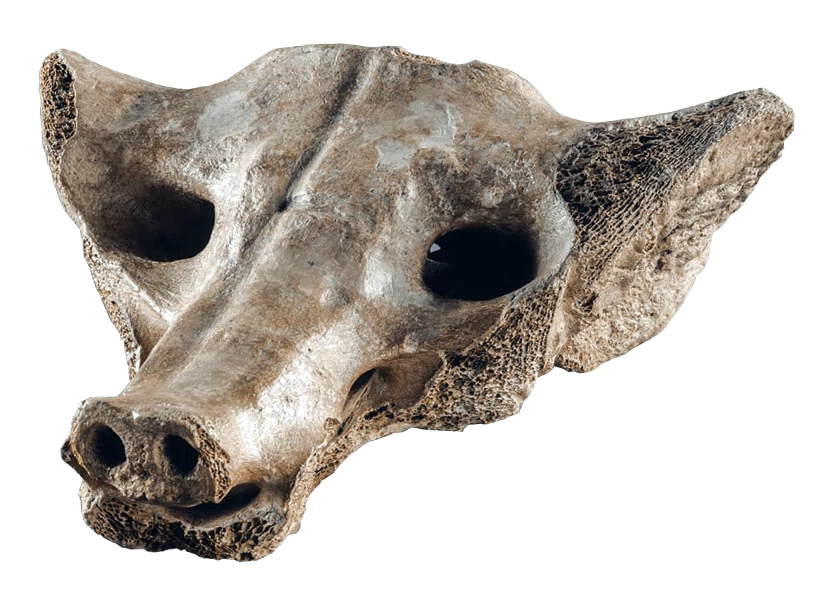
3
Camelid Sacrum in the shape of a canine
Prehistoric American, bone, 14,000-7,000 BCE, Tequixquiac (Mexico)
Example of a found object in the round with significance related to fertility

4
Running Horned Woman
Prehistoric African, pigment on rock, 6,000-4,000 BCE, Tassili n’ Ajjer (Algeria), 20’ x 9’
Cave painting related to fertility
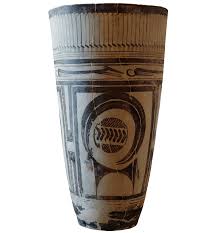
5
Beaker with Ibex Motifs
Prehistoric Middle East, painted terra cotta, 4,200-3,500 BCE, Susa (Iran), 1’ tall
Example of ground and horizon lines used to separate images of highly stylized figurative ibexes with registers
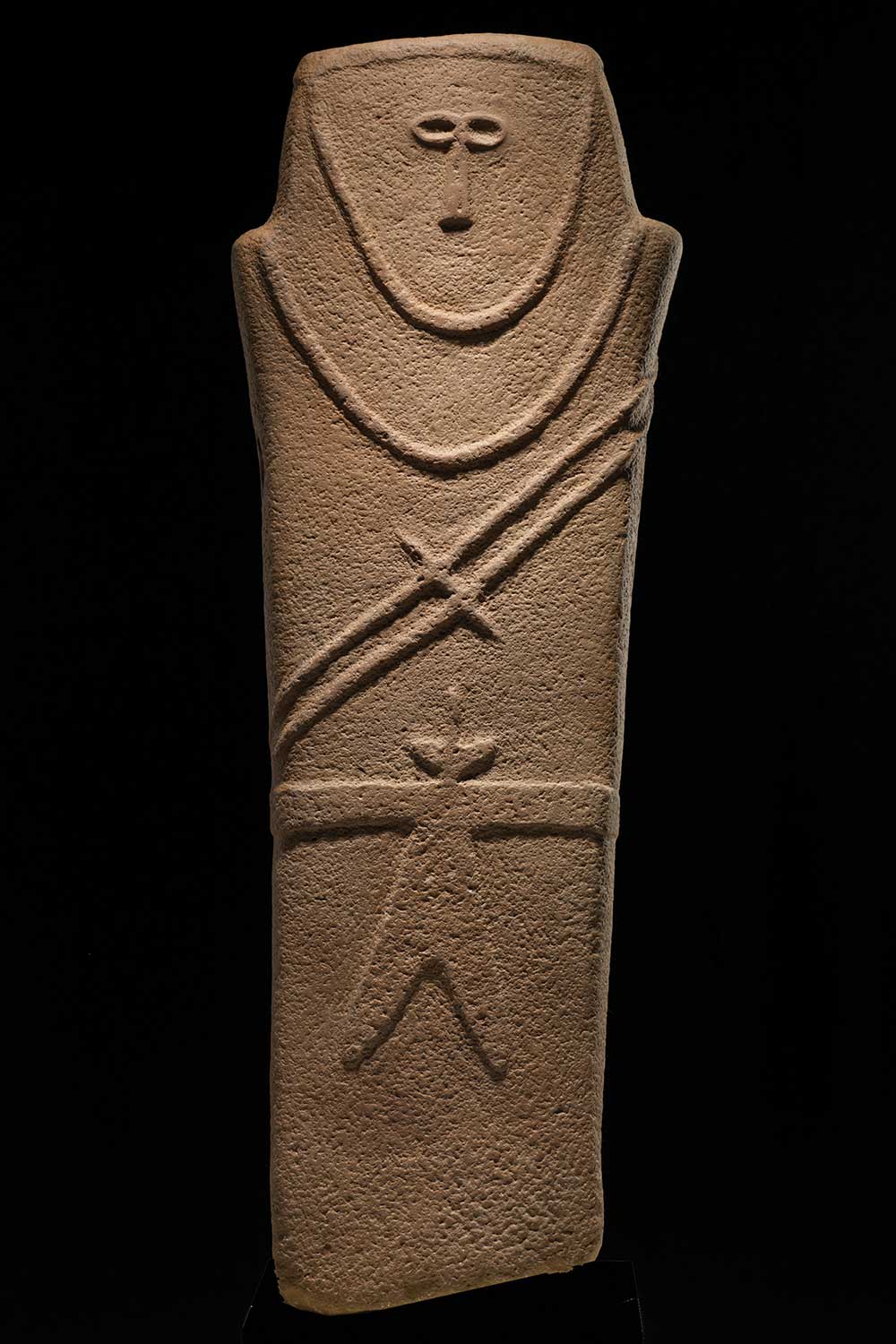
6
Anthropomorphic Stele
Prehistoric Middle East, sandstone, 4,000 BCE, Arabian Peninsula, 3’ tall
Highly stylized person used as a marker for a grave. Shows the usage of figurative art in prehistoric Arabia where later on representational art would not be allowed
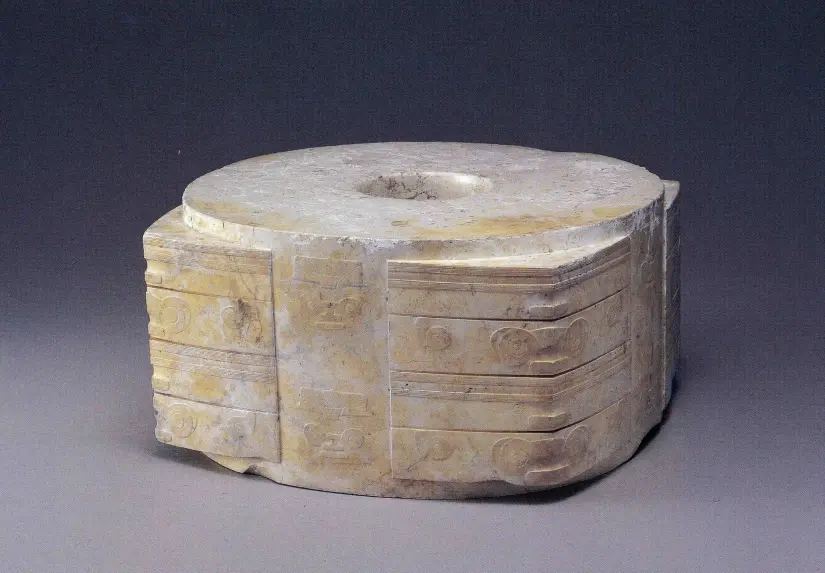
7
Jade Cong
Prehistoric China, carved jade, 3,300-2,200 BCE, Liangzhu (China), 1’ diameter
Purpose unknown but shape and difficulty to make suggests a display of wealth and some connection between heaven and earth
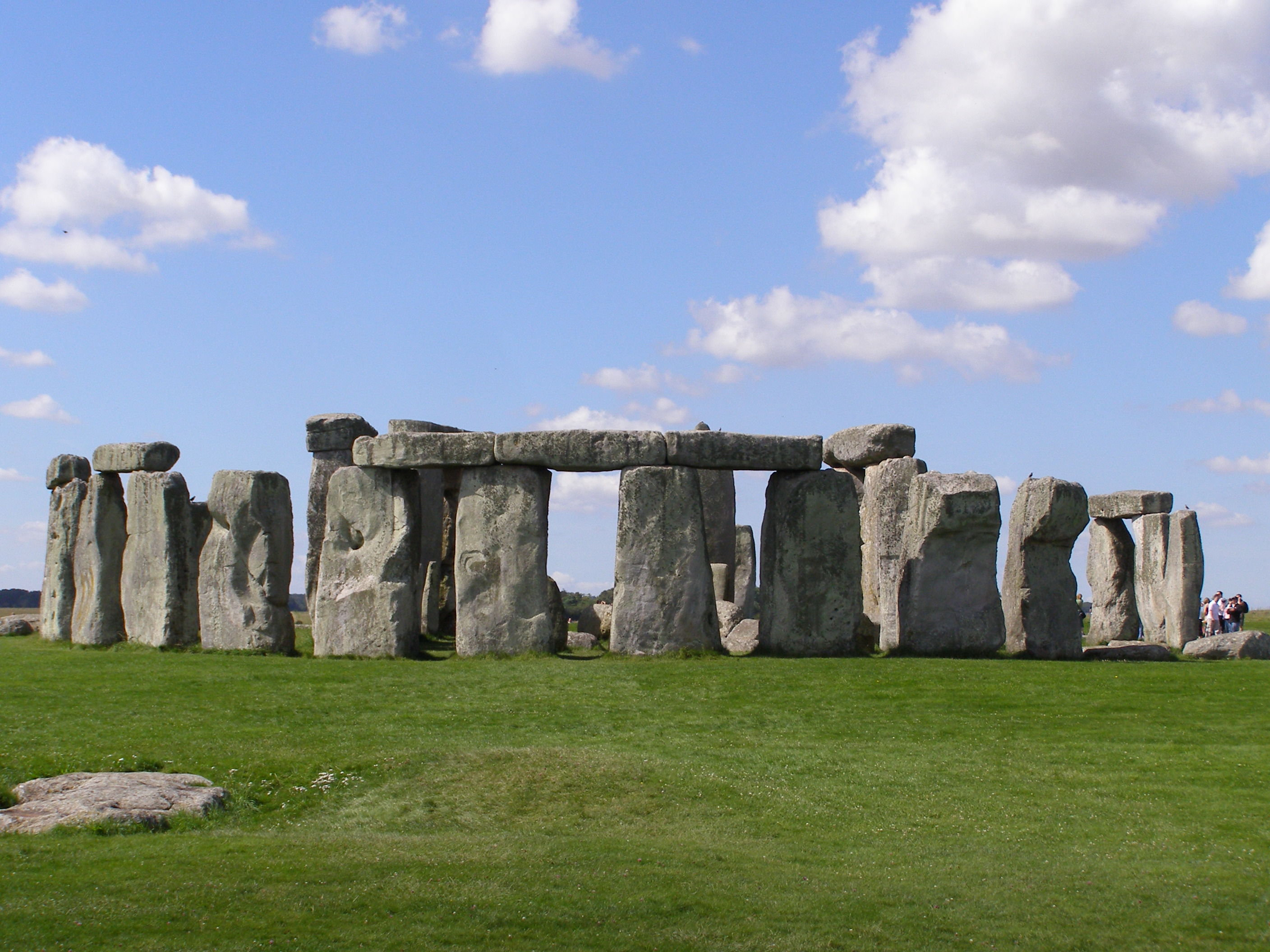
8
Stonehenge
Prehistoric Europe, sandstone, 2,500-1,600 BCE, Wiltshire (England), diameter 320’, stones 30’ tall
Accurate calendar for astronomical events. It is believed to be a sacred astronomical observatory
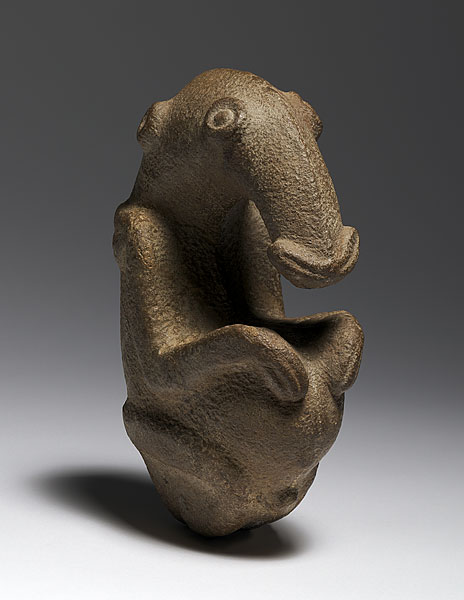
9
The Ambum Stone
Prehistoric Oceania, greywacke, 1,500 BCE, Ambum Valley (Papua New Guinea), 8” tall
Oldest Oceanic work of a (presumed) stylized fetal echidna with a utilitarian purpose (grinding something)
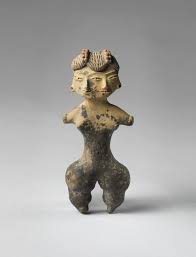
10
Tlatilco Female Figure
Prehistoric America, ceramic, 1,200-900 BCE, Tlatico (Central Mexico), 4” tall
Believed that the conjoined twin and others with physical differences from society were demonic or related to the underworld → guardian or guide to the underworld
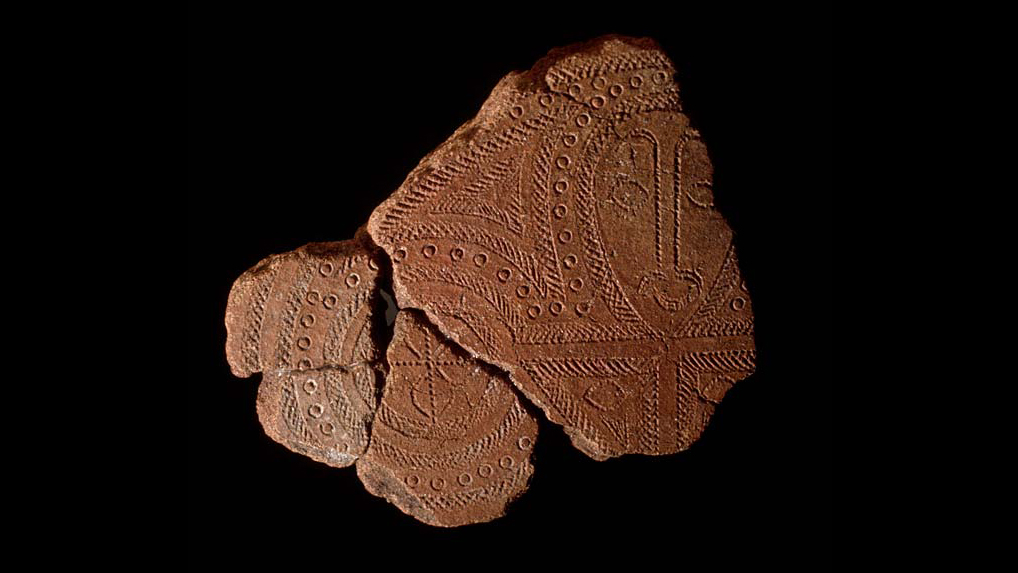
11
Terra Cotta fragment
Prehistoric Oceania, incised terra cotta, 1,000 BCE, Solomon Islands (Reef Islands)
Part of a utilitarian box for carrying food which also symbolized status
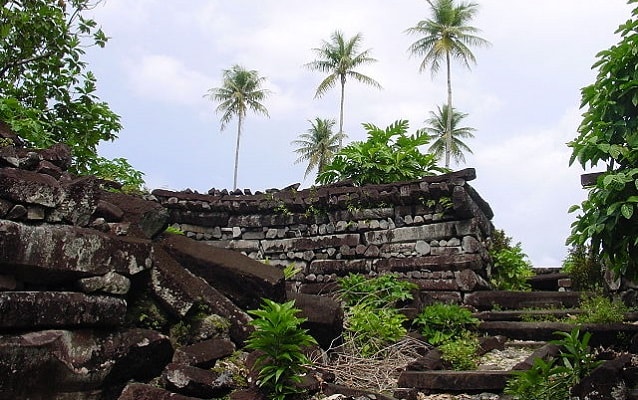
12
Nan Madol
Pacific (Saudeleur Dynasty), basalt boulders and prismatic columns, 700-1600 CE, Pohnpei (Micronesia)
Large island complex built on a coral reef as a capital of the ruling dynasty. Symbol of wealth and status and had religious importance (people worshiped the sea in this culture)
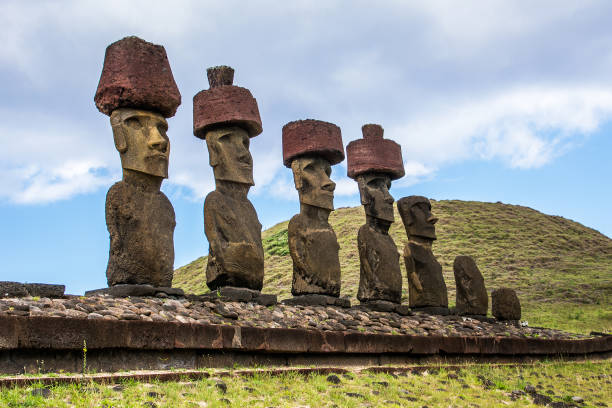
13
Moai on platform (ahu)
Pacific (Rapa Nui), volcanic rock figures on basalt base, 1,100-1600 CE, Rapa Nui (Easter Island), 13’ tall, ~887 on the island
The statues mostly of men face the island and thought to protect the islanders
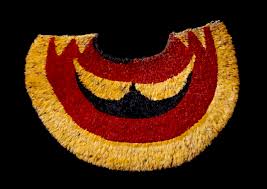
14
‘Ahu’ula
Pacific (Hawaiian), feather and fiber, late 18th c., 26” x 17”
Made by men out of exotic birds to give them mana (supernatural power). Thought to embody ancestors and gods when worn → not passed on to descendants

15
Staff God
Pacific (Rarotonga), wood, tapa, fiber, and feathers, Late 18th - early 19th c., Rarotonga (Cook Islands), 12’ tall
Used as part of a fertility ceremony for crops, little known about use → European Christianize islands caused most of them to be burned
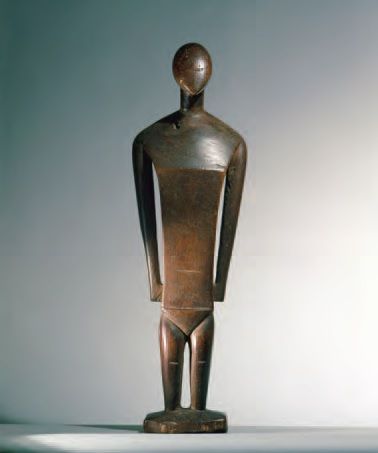
16
Female Deity
Pacific (Nukuoro), wood, 18th - 19th c., Nukuoro (Micronesia), 16” tall
One of many Pacific arts of stylized bodies that influenced modern western art. Used for fertility ceremonies and would be decorated to represent a certain deity
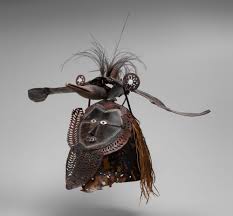
17
Buk Mask
Pacific (Torres Strait Islanders), turtle shell, wood, fibers, feathers, and shell, mid to late 19th c., 21” tall
Totem mask used to connect the wearer to ancestor and spirit animals (frigate bird) for fertility, male initiations → gave the wearer mana

18
Hiapo (tapa cloth)
Pacific (Niue), tapa, 1850-1760 CE, Niue (Pacific)
Made with geometric and representational art used for various purposes including money and warmth. Made sorely by women (rigid social structure dictated what groups of people could or couldn’t do)

19
Tamati Waka Nene - Gottfield Lindaur
Pacific (Czech/New Zealand), oil on canvas, 1890 CE, 40" x 32”
Mix of European and Pacific culture, drawn in European portraiture of a cultural leader (baptized) to represent the culture of New Zealand
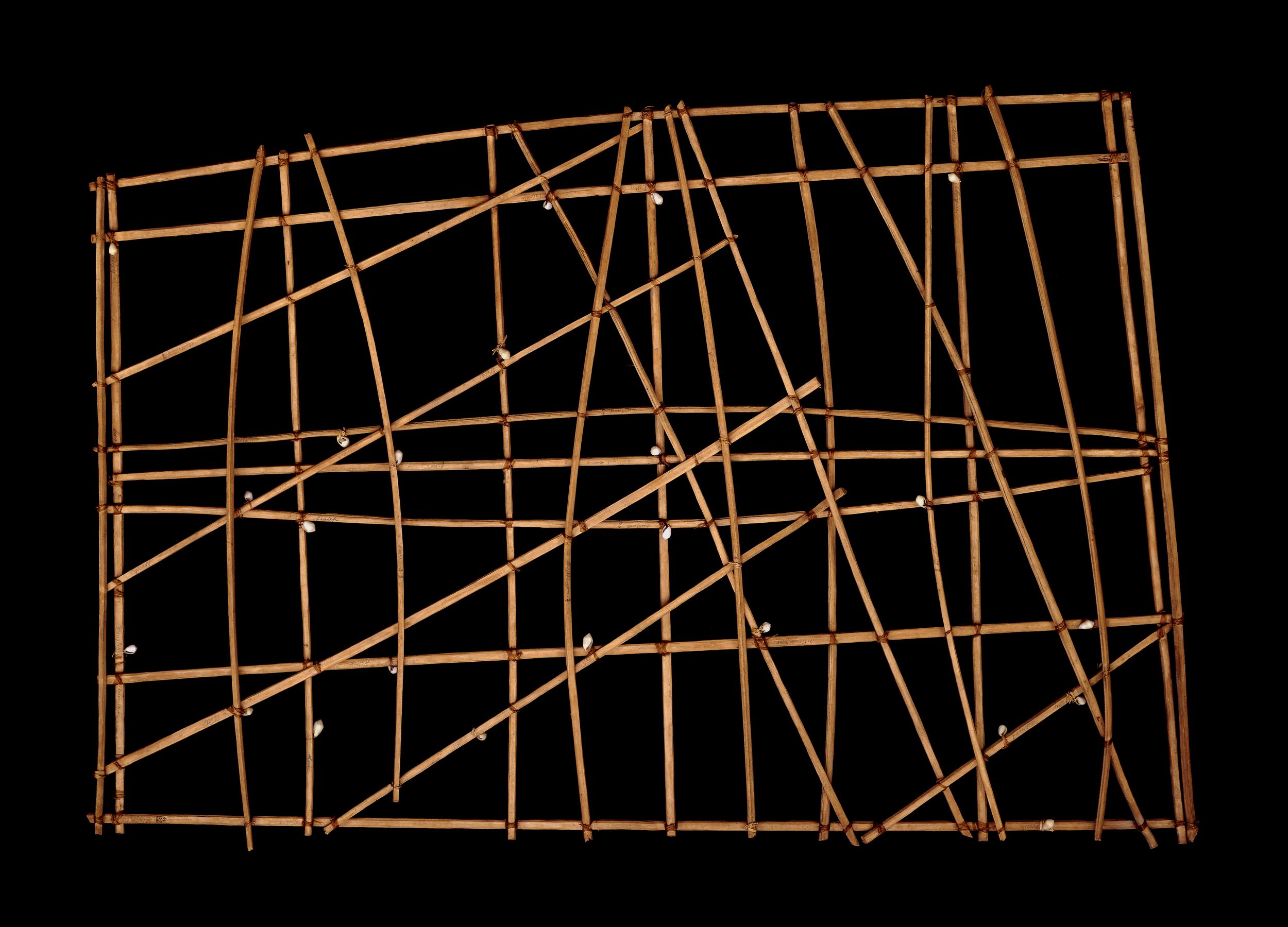
20
Navigation Chart
Pacific (Marshall Islands), coconut, wood, shells, and fiber, 19th - early 20th c., Marshall Islands (Micronesia), 26” x 38”
Map of the tidal patterns from island to island used by master navigators
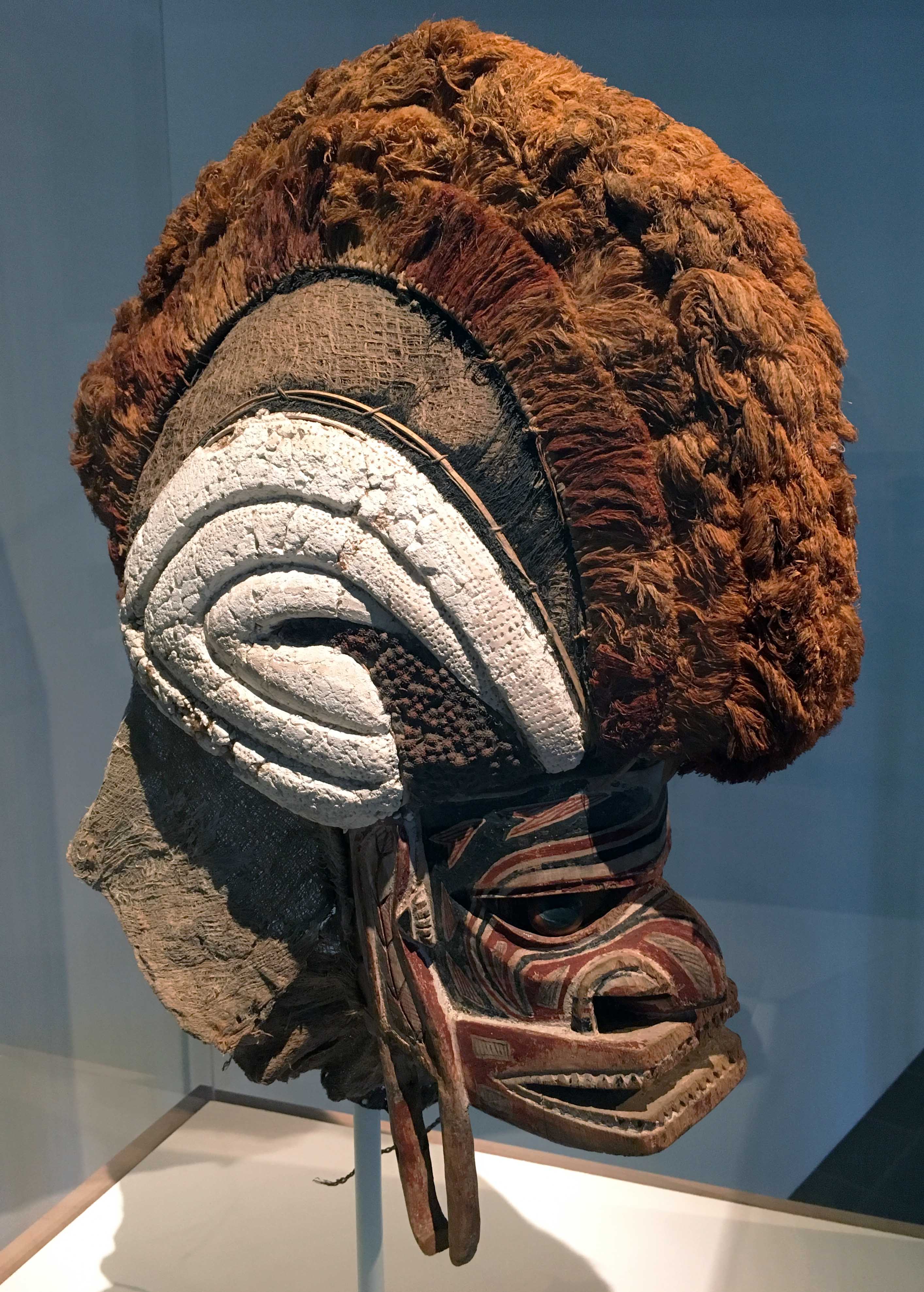
21
Malagan Mask
Pacific (Papuan), wood, pigment, fiber, and shell, 20th c., New Ireland Province (Papua New Guinea)
Used in ceremonies for ancestors, hair lopsided to represent hair shaving for ancestry ceremonies, made and worn by men, has ges (spiritual double of an individual)
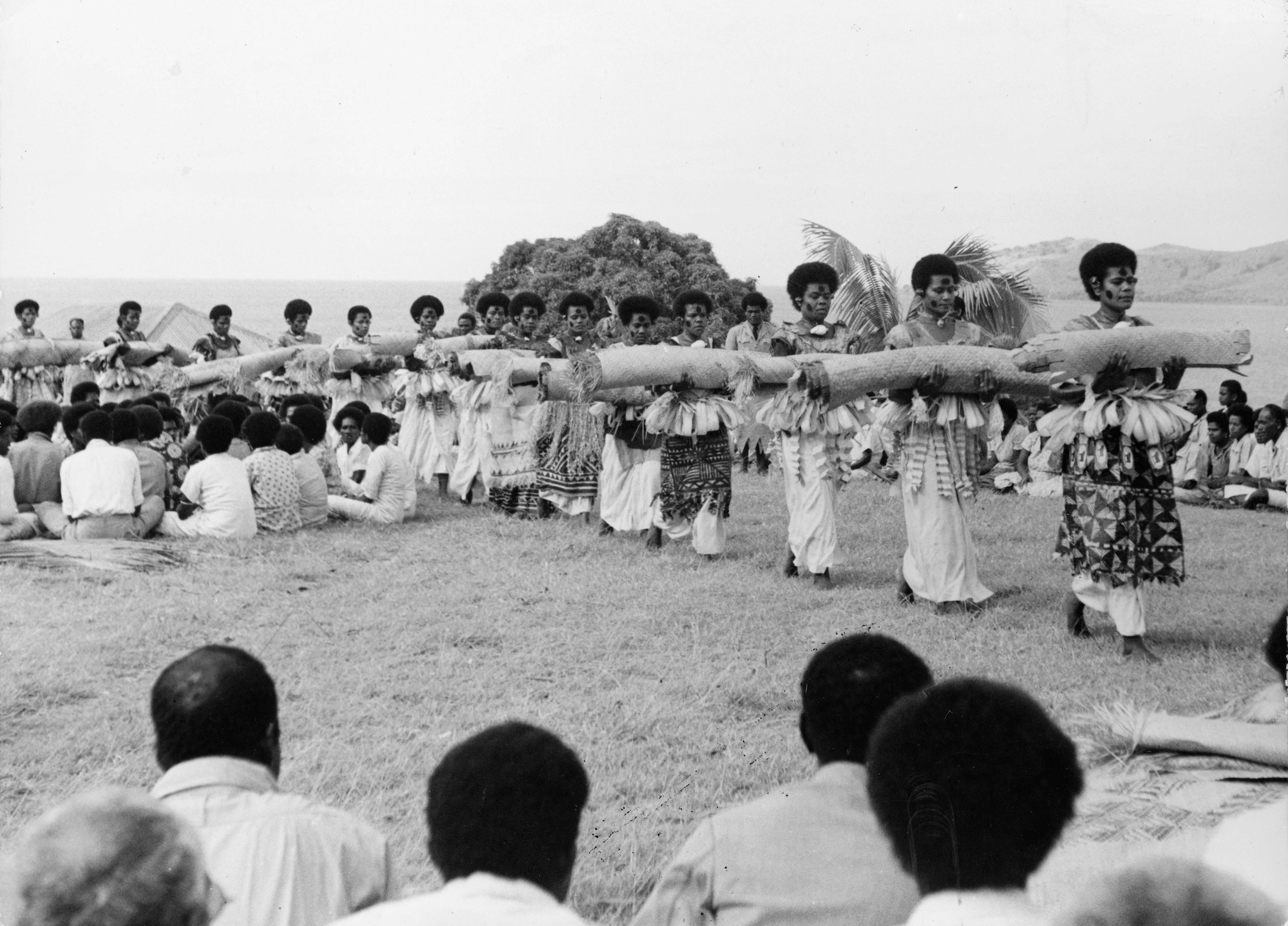
22
Presentation of Fijian Mats and Tapa Cloths to Queen Elizabeth II
Pacific (Fijian), multimedia performance, photographic demonstration, 1953 CE, Fiji (Polynesia), 75’ long cloth
Present from people of Fiji to Queen Elizabeth II as a great gift to her on her trip to keep people in the British empire
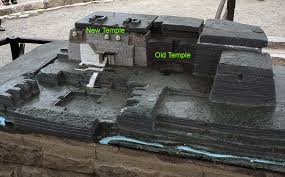
23
Chavin de Huantar
Chavin stone, 900-200 BCE, Northern Highlands (Peru)
Elevation of site significant to connect different climes together. Hallways built underneath
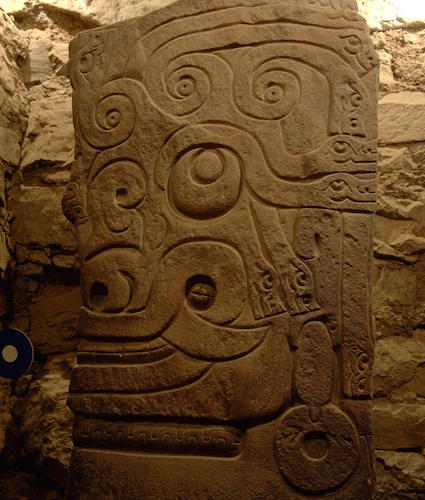
23 - sub-piece
Lanzon Stele
Smiling god with feline features and stylized snake brows (God unnamed)
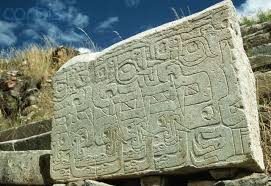
23 - sub-piece
Relief Sculpture
Animalistic god’s depicted. Made using low relief
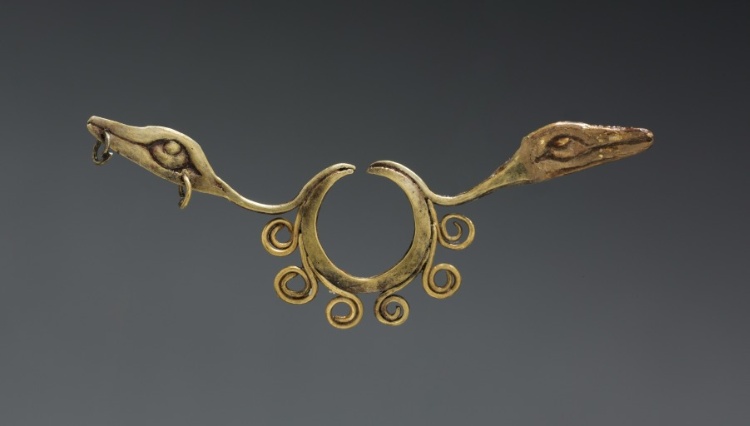
23 - sub-piece
Nose Ornament
Made of gold with serpent motif (common in region) animals were often part of god’s
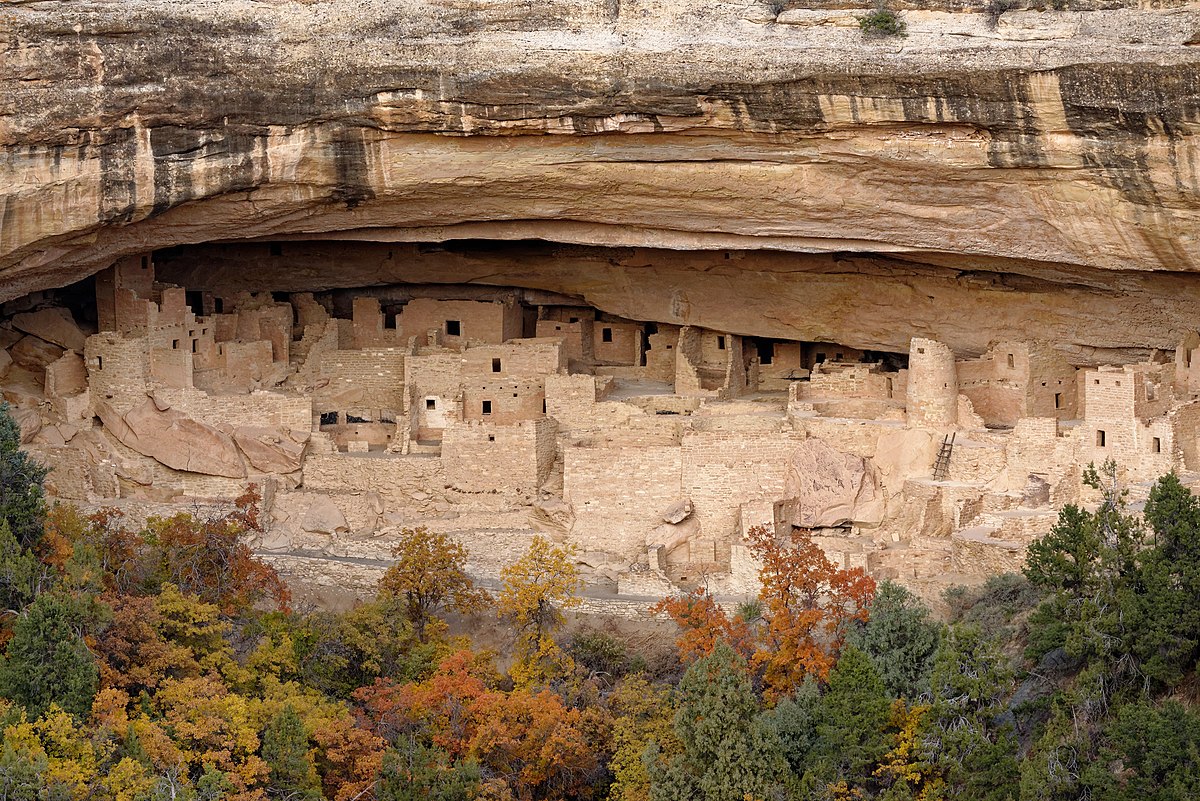
24
Mesa Verde Cliff Dwellings
Anasazi, sandstone, 450-1300 CE, Montezuma County (Colorado)
Protection from natural elements (sun in winter and shade in summer), invading people can be fought against, possibly has spiritual significance

25
Yaxchilan
Maya, limestone, 725 CE, Chiapas (Mexico)
Commemorates the royal lineage of Shield Jaguar to legitimize Bird Jaguar’s (descendant) rule
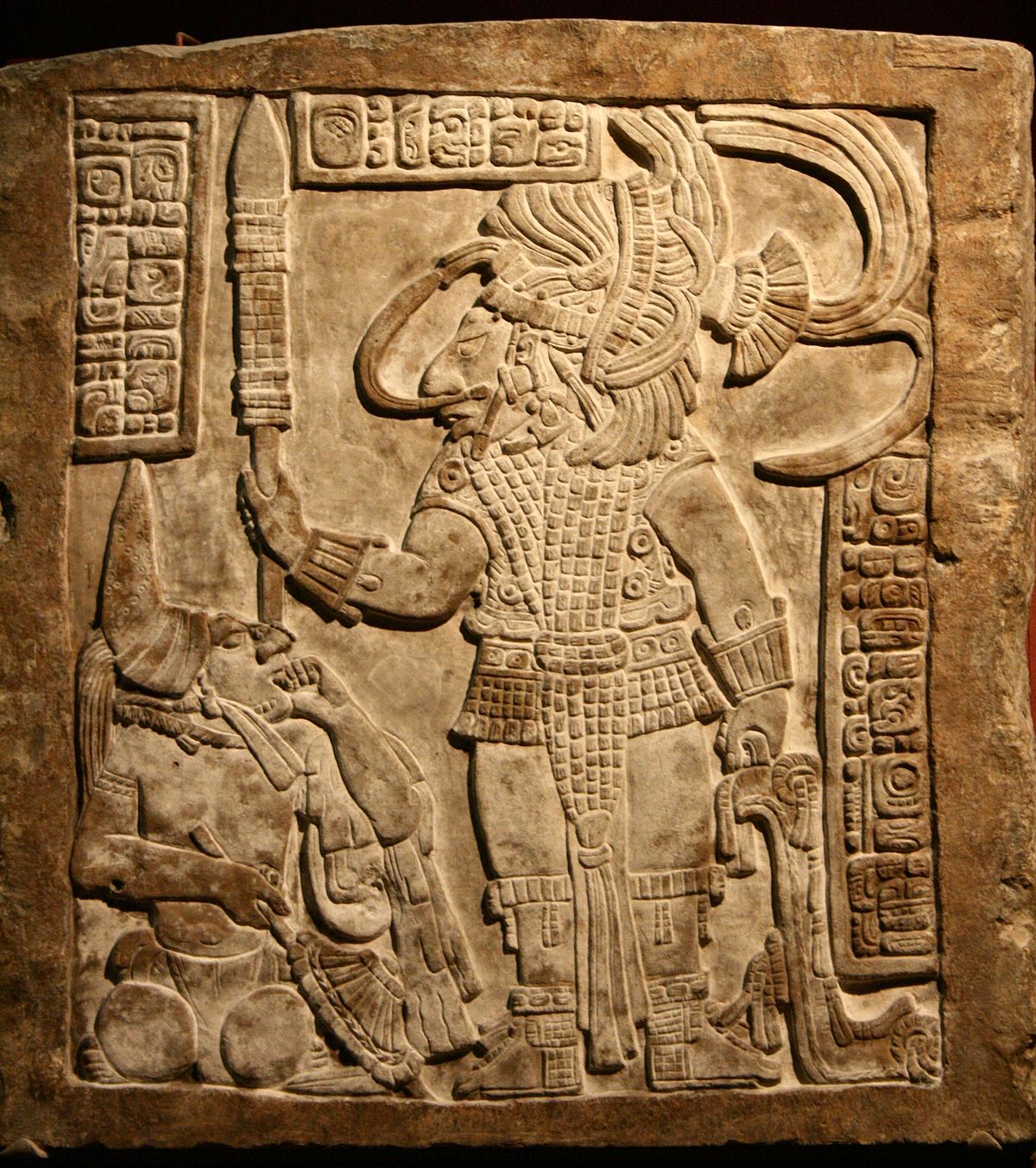
25 - sub-piece
Lintel 16
Depicts Shield Jaguar with a captive - Shield Jaguar is supported by his ancestors
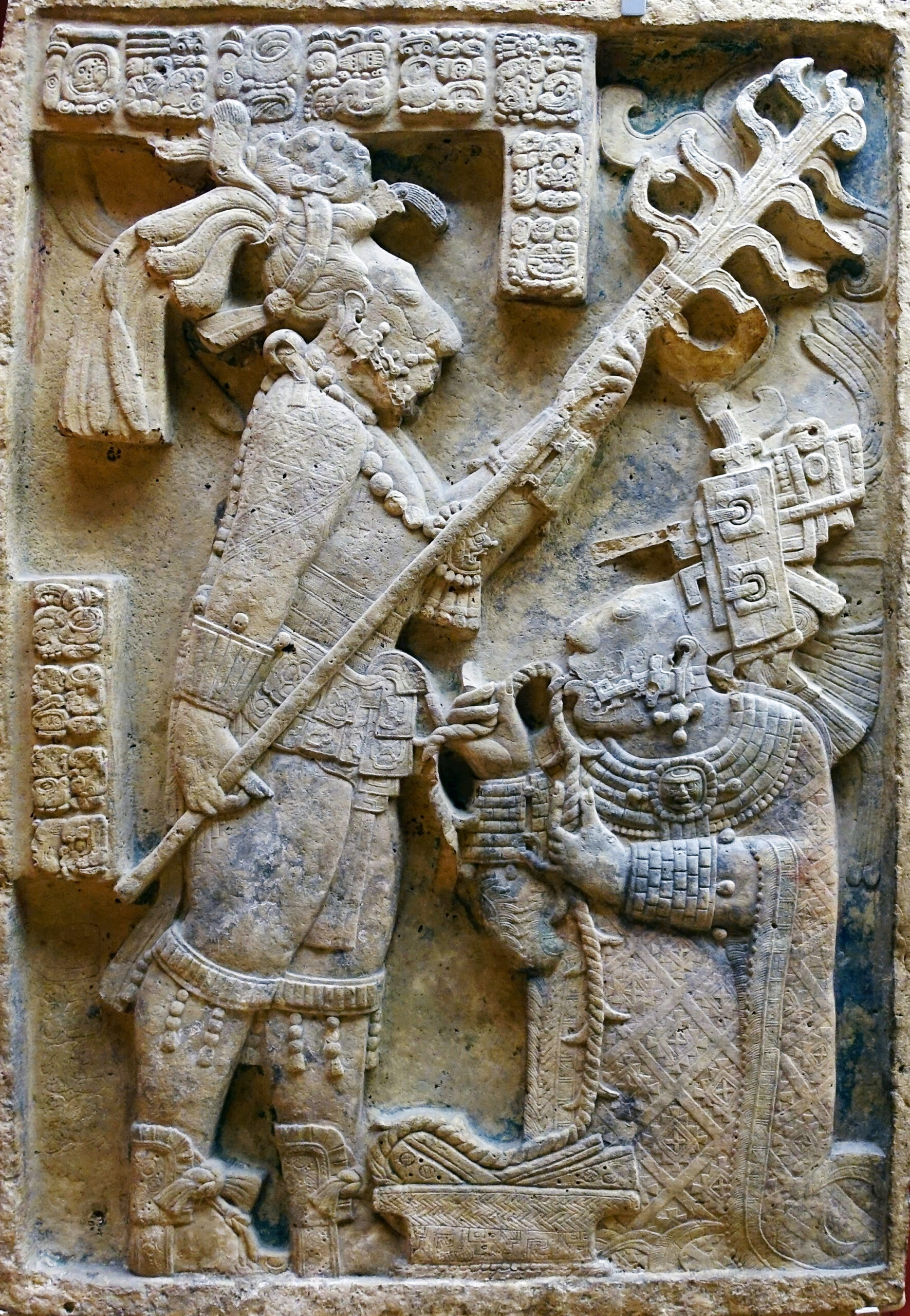
25 - sub-piece
Lintel 24
Lady Xoc (Shield Jaguar’s wife) going through royal blood letting ceremony (will then see the god’s to affirm Shield Jaguar’s right to rule)

25 - sub-piece
Lintel 25
Lady Xoc’s vision of Shield Jaguar coming from the mouth of the god Taloc (legitimizes his rule)
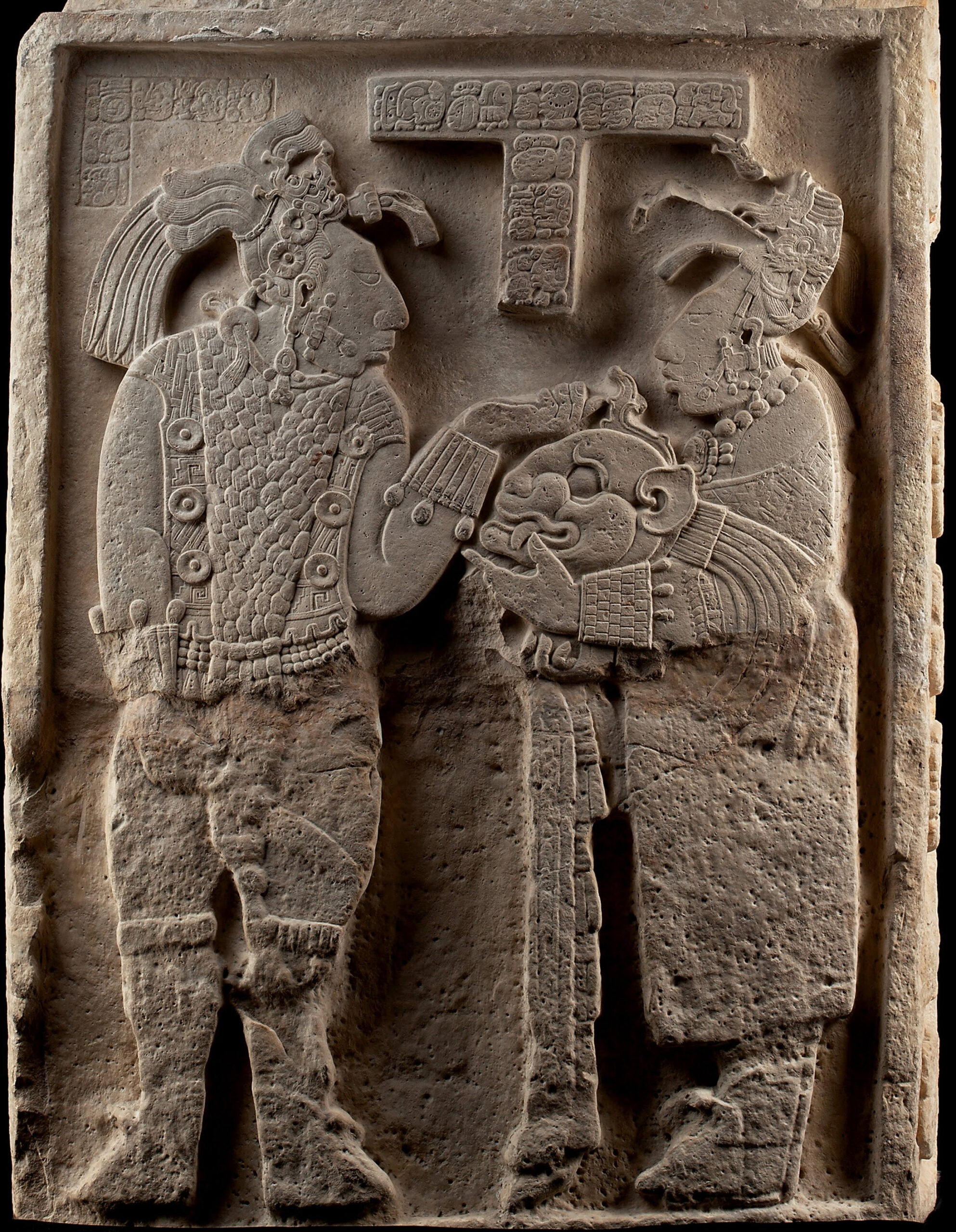
25 - sub-piece
Lintel 26
Lady Xoc presenting her husband with a helmet after her vision → ascending to power because of her vision
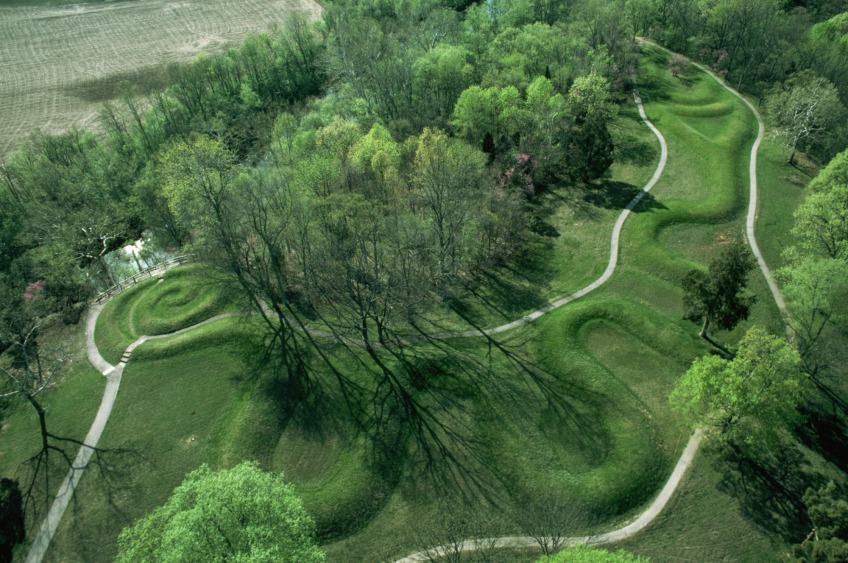
26
Great Serpent Mound
Mississipian, earthwork/effigy mound, 1070 CE, Adams County (Ohio), 13448’ x 3’
The body of the snake points to astronomical events (head towards summer solstice, curves of the body with moon phases, head swallowing sun → solar eclipse)

27
Templo Mayor
Mexican, stone, Tenochitlan, 197’ tall
2 temples at the top, South temple (red, dedicated to God of war & sacrifice (Hutizilopochtli) daily human sacrifices), North temple (blue, dedicated to God of water & rain (Taloc) for fertility and growth). Temples related to astronomical events (solstices)
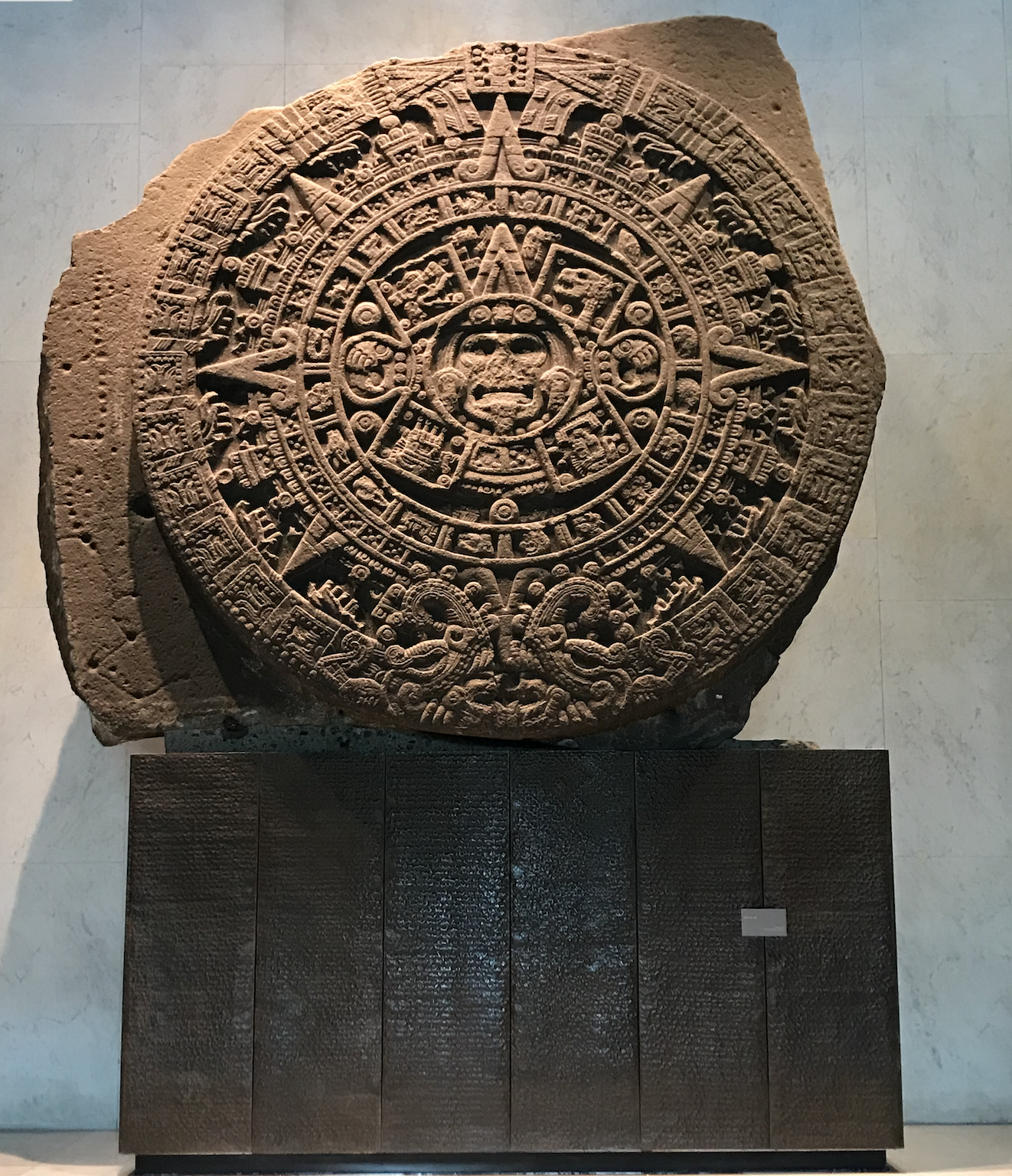
27 - sub-piece
Calendar Stone
Record of universe/cosmos as Aztecs saw it (20-day system) Sacrifices might have taken place on the stone (placed on top of the southern temple)

27 - sub-piece
Coyolxawhqui
Based on a story about a daughter of the sun deity punishment for acting revenge on her brother (cut up and thrown down steps of temple → recreated every year by Aztecs (placed at the bottom of the southern temple)
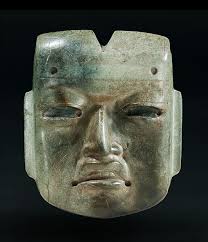
27 - sub-piece
Olmec-style mask
Cross-cultural collection of art by Aztecs - worn by them as some sort of heavy necklace
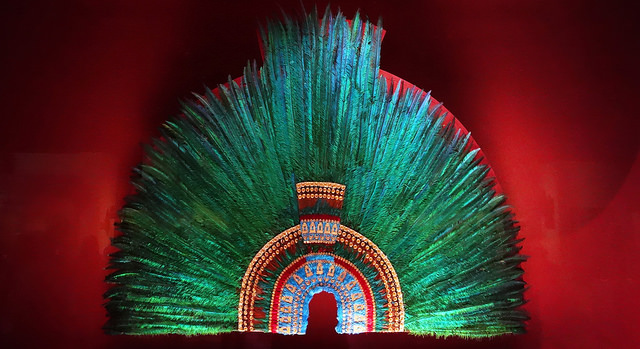
28
Ruler’s Feather Headdress (probably of Motechunoza II)
Mexica, feathers and gold, 1428 - 1520 CE, 3’ 9” high
One part of a costume for a ceremony to represent the power of a ruler
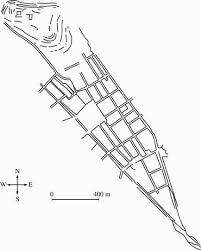
29
City of Cusco
Inca, andersite, 1440 CE, Central Highlands (Peru)
In the shape of some sort of large cat, city and fortress divided into quarters - top half for upper class, bottom half for lower class
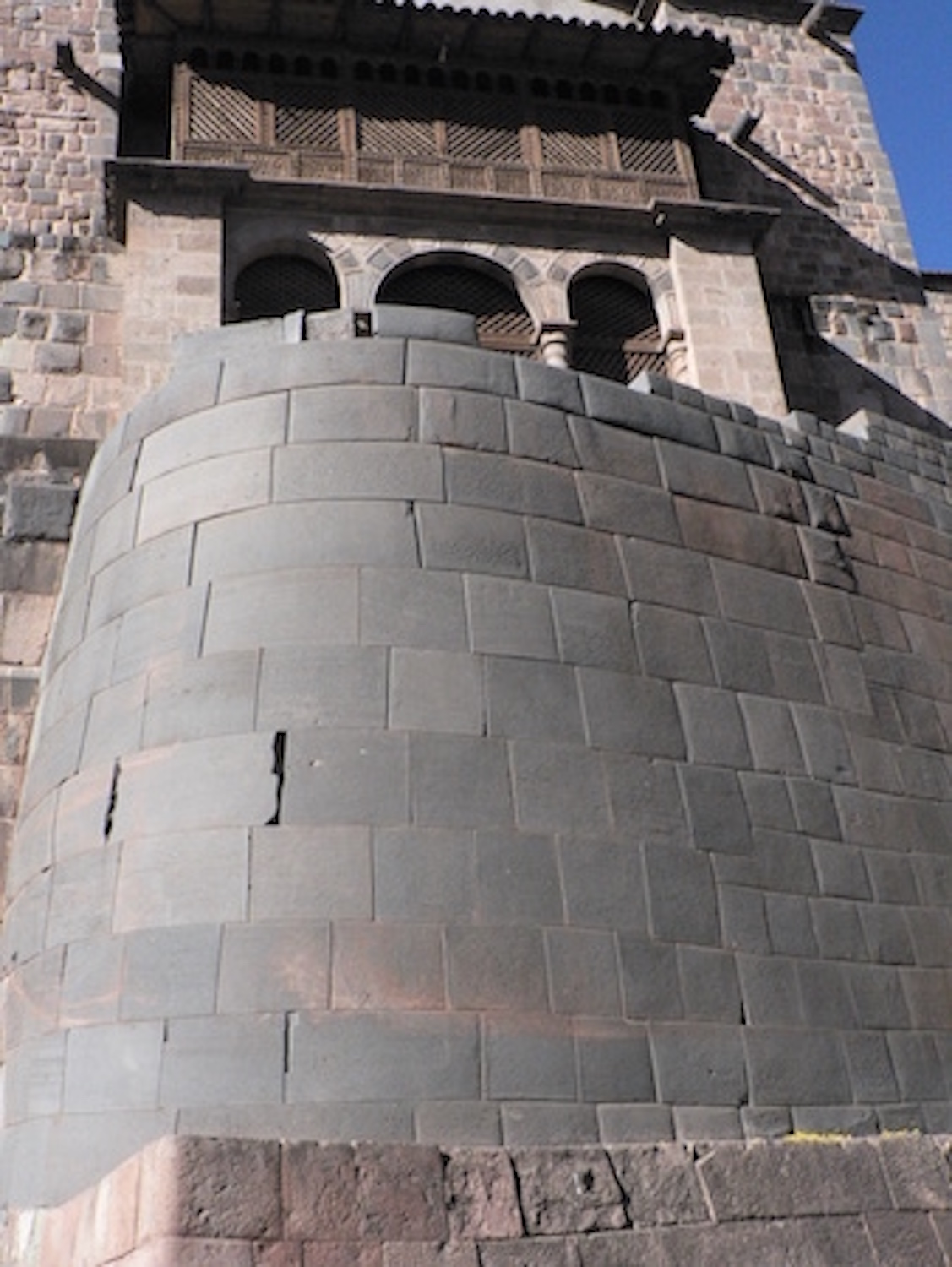
29 - sub-piece
Curved Inca wall of Qorikancha and Church of Santo Domingo
Spanish added on top of the original temple which was hammered with gold on inside, wall made with ashlar masonry
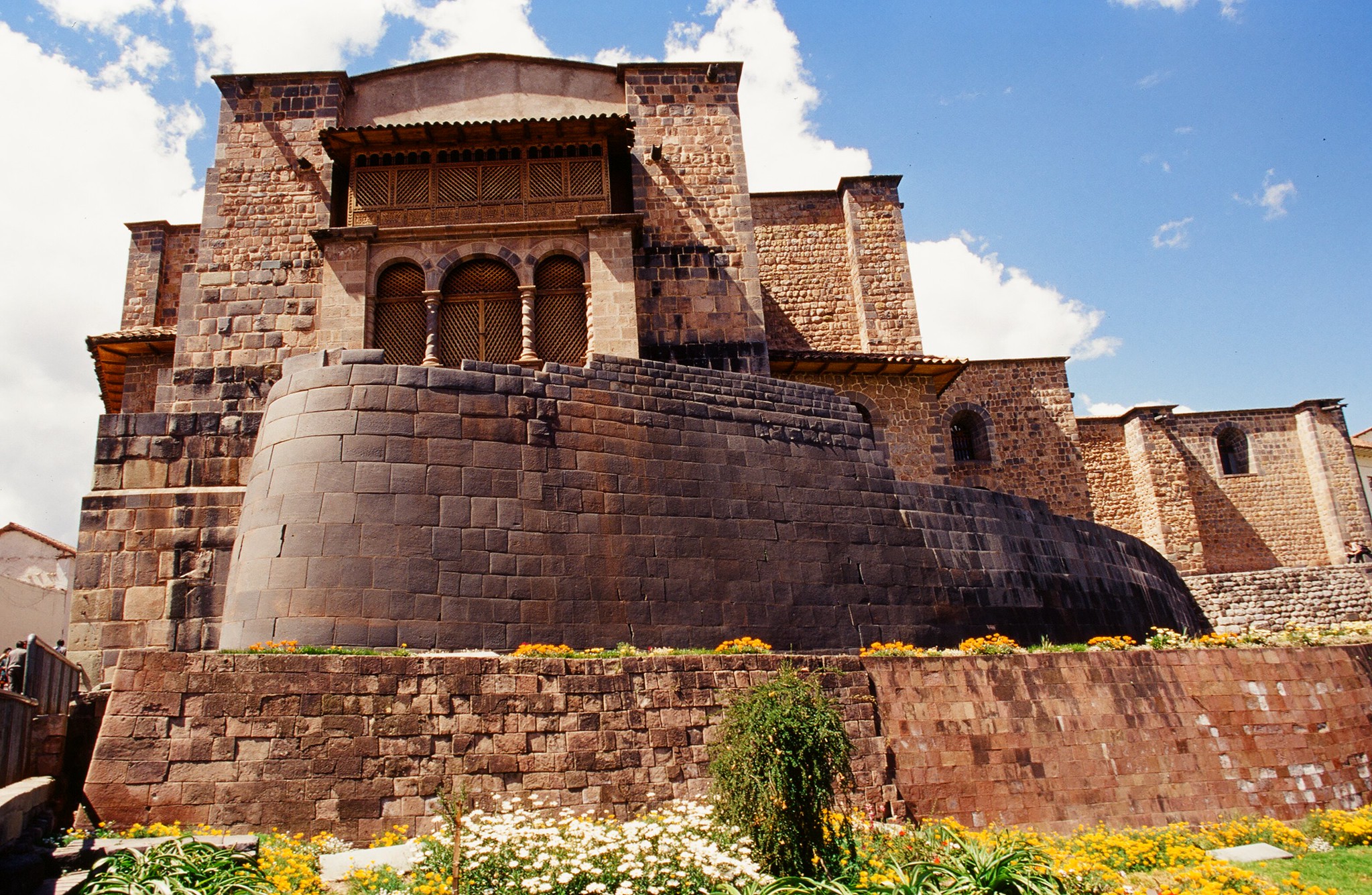
29 - sub-piece
Sculpture garden in the City of Cusco
Made with real plants and fake plants of silver and gold to manifest fertility
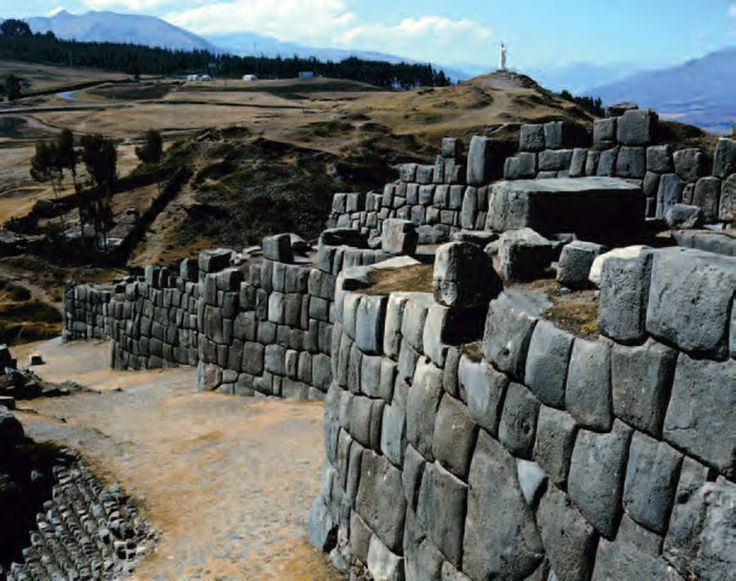
29 - sub-piece
Stone Wall at Sasqua Waman
Ashlar masonry, can move slightly for seismic activity but has a very tight fit made out of huge stones
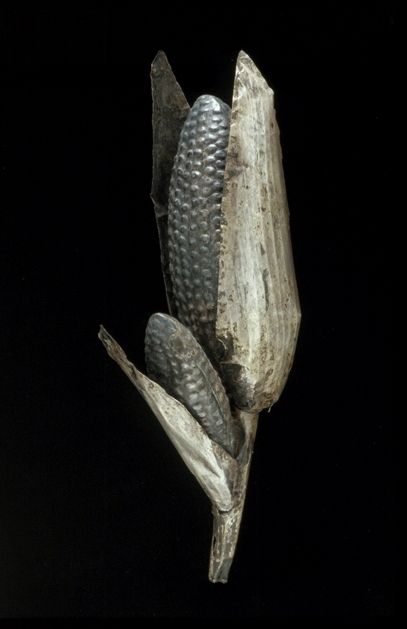
30
Maize Cobs
Inca, sheet metal, gold, and silver, 1440 - 1533 CE, 10” tall, in garden (Cusco)
Metal pushed to make a raised design making it an example of Inca metalwork, used to manifest fertility in garden
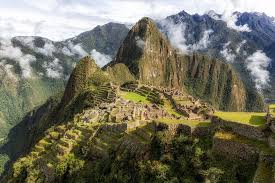
31
Machu Pichu
Inca, granite, 1450-1540 CE, Central Highlands (Peru), 580m x 200m
Commissioned by Inca Emperor to be built by a sacred river on top of a sacred mountain with view of other sacred mountains. challenge → elevation, solutions: terraces
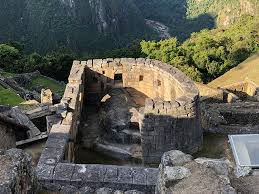
31 - sub-piece
Observatory (Temple of Sun)
During summer solstice → sun came through, upper window as a gate to heaven, lower window as a gate to underworld
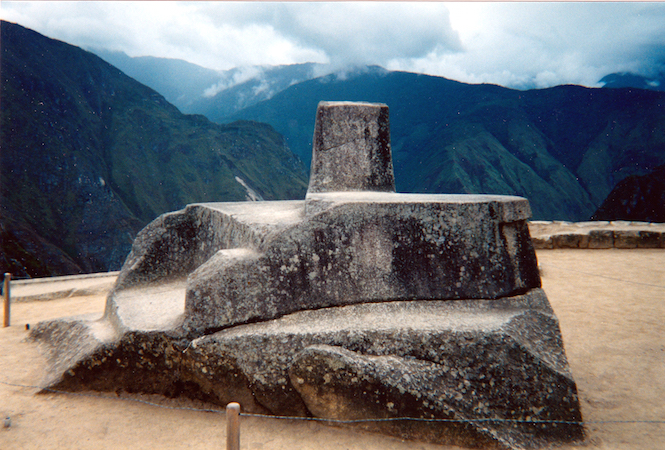
31 - sub-piece
Inthiunatana Stone
Hitching post of the sun - sun dial meant for ruler to predict weather since ruler was descendant of Sun god
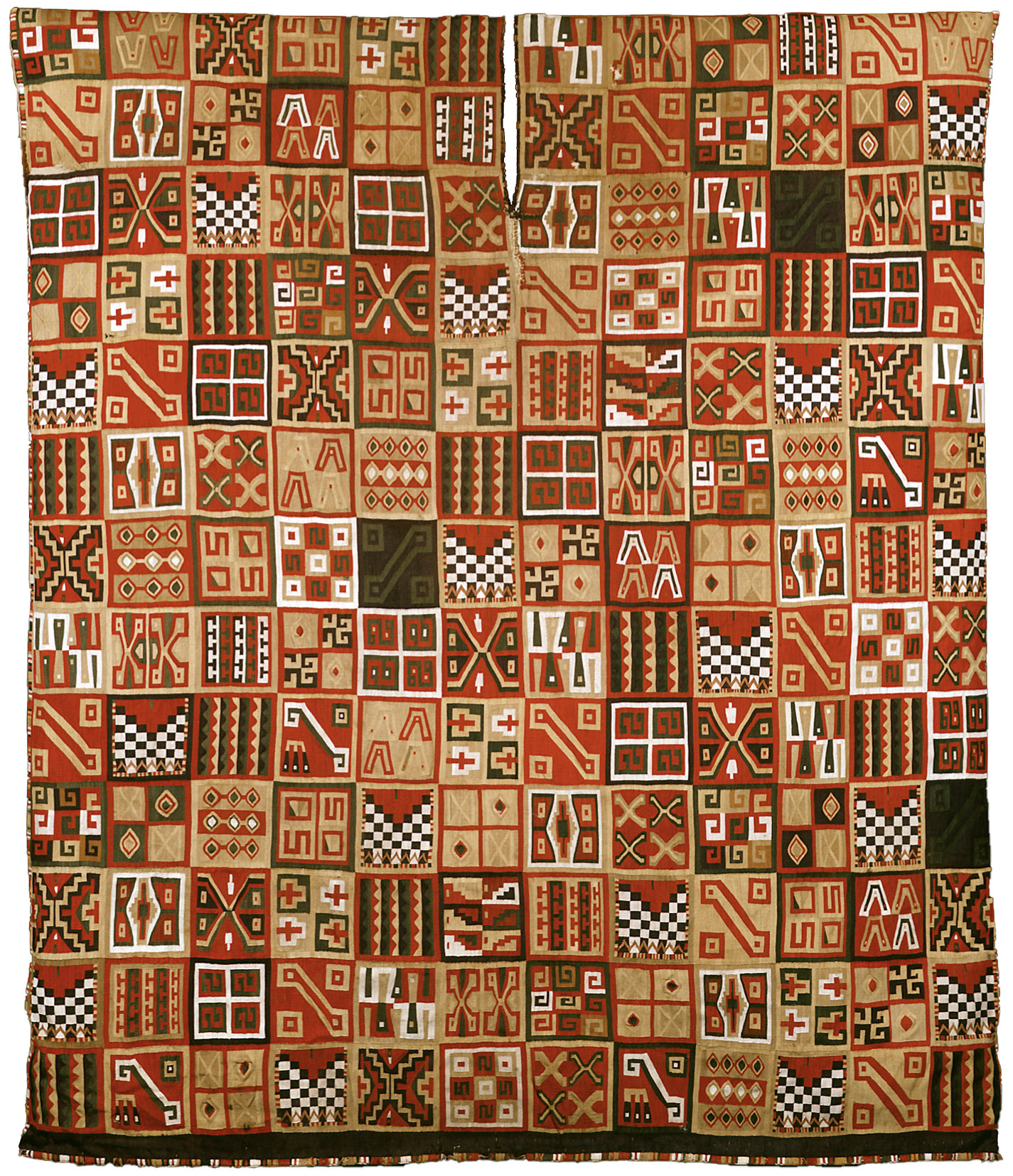
32
All-Toqapu Tunic
Inca, camelid fiber & cotton, 1450-1540 CE, 3’ x 2.5’
Individual family clan designs made by women stitched into tunic to represent the power of a ruler
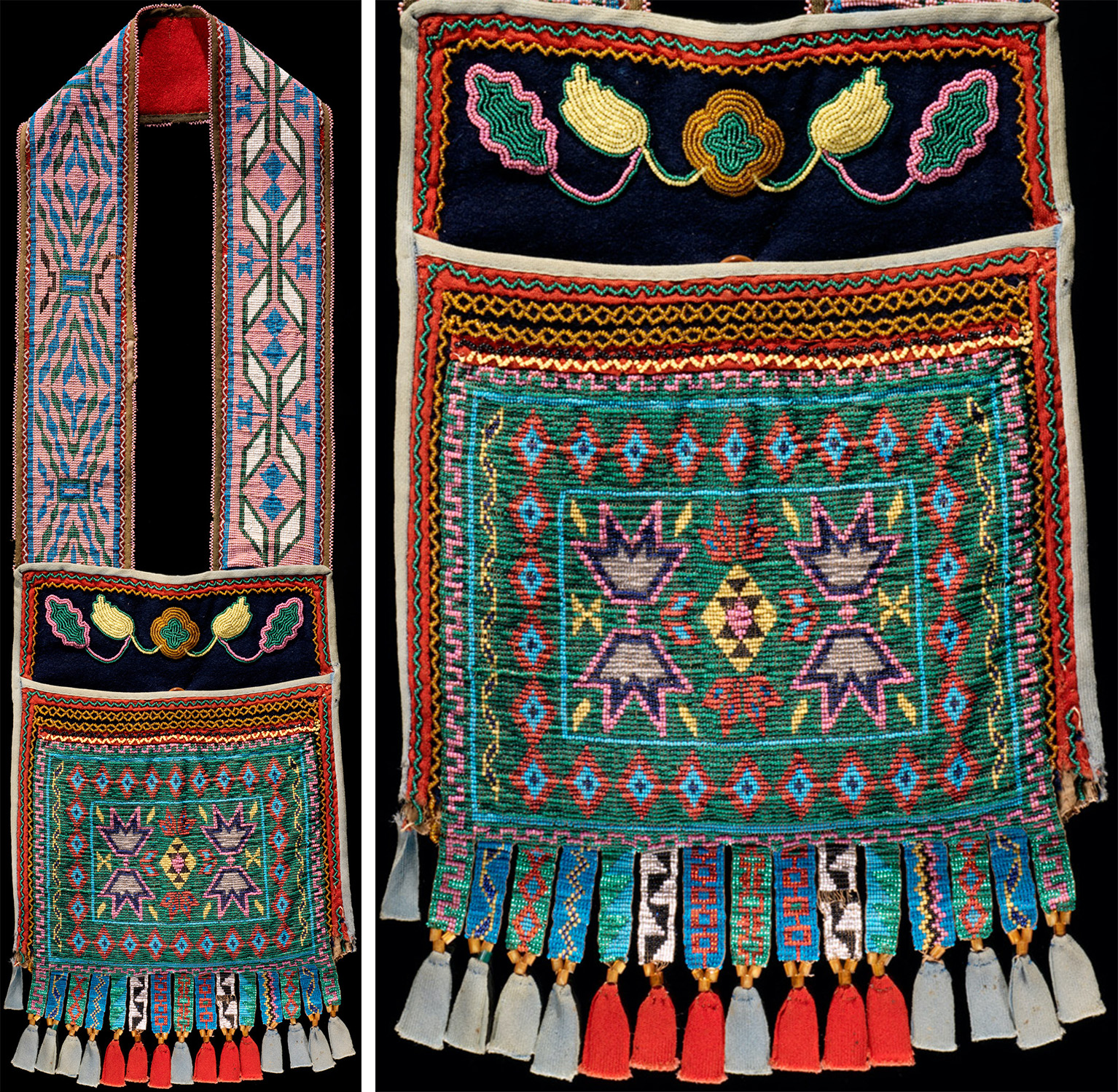
33
Bandolier Bag
Lenape (Delaware Tribe), bead work on leather, 1850 CE, 2’ x 16”
Influenced by fur traders but made into a Native American status symbol (more beads = more status) in Prairie style
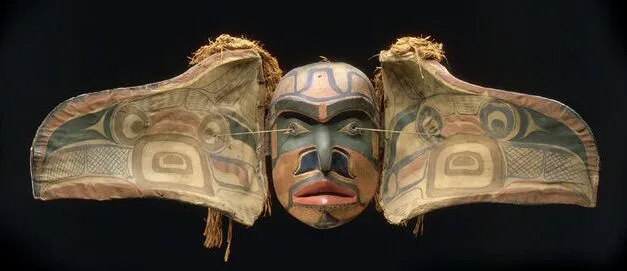
34
Transformation Mask (opened)
Kwakwaka’wakw, wood, paint, & string, Late 19th c. CE, Northwest coast of Canada, 4’ 4” open
European tools used to make more complex designs and brighter colors, stylized & ornate design used for ceremony (commemoration of birth, death, coming of age, etc.) Used to recreate creation myth story, form line style
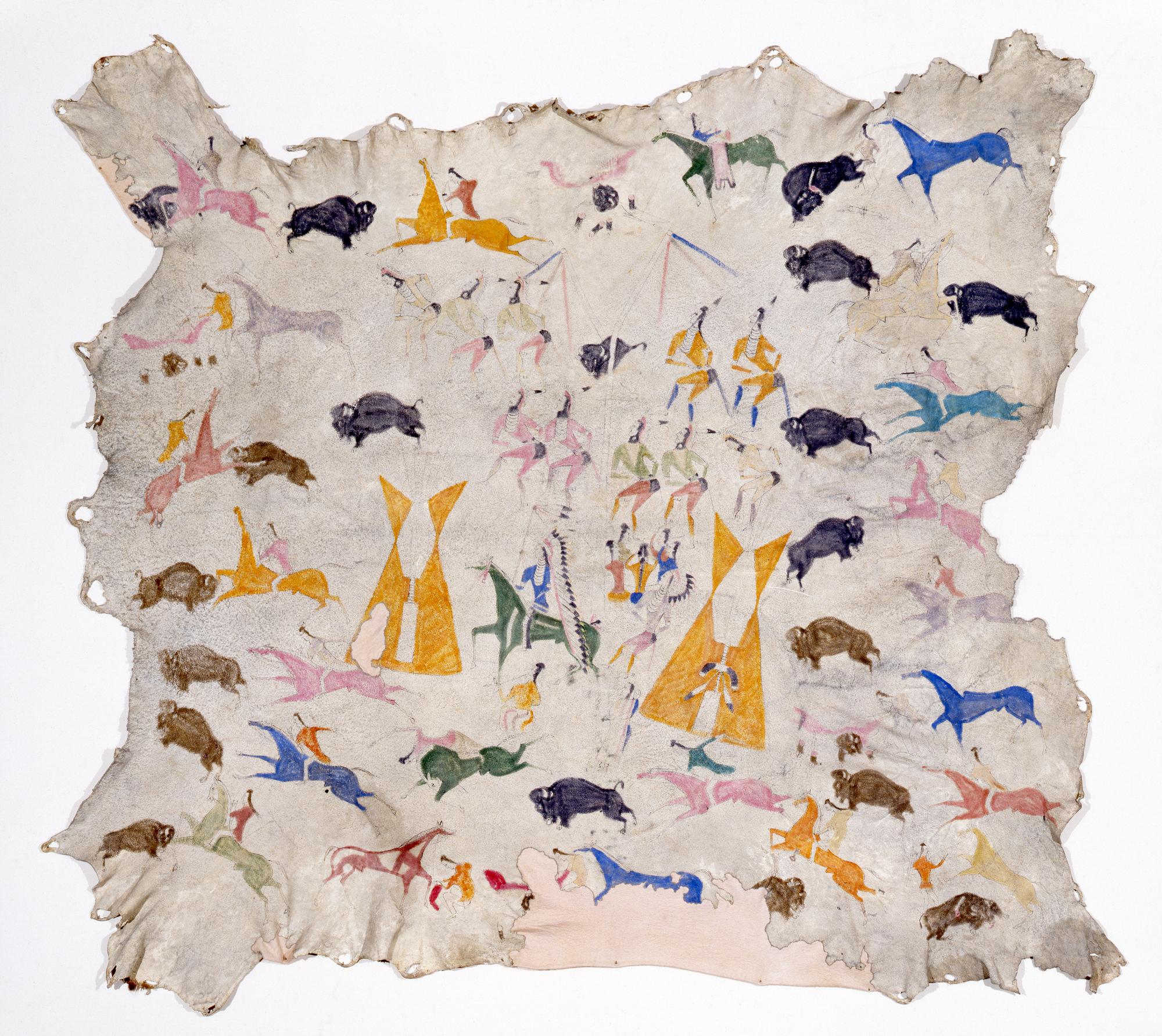
35
Painted Elk Hide
Attributed to Cotsiogo (Cadzi Codi), Eastern Shoshone, painted elk hide, 1890-1900 CE, Wind River Reservation (Wyoming), 6’9” x 6’6”
In the style of pre-Columbian Indigenous art, used to make souvenirs which romanticized Native American life for European Americans.

36
Black on Black Ceramic Vessel
Maria Martinez & Julian Martinez, Puebloan, black-ware ceramic, mid 20th c. CE, New Mexico, 11” x 13”
Keeping Native American tradition alive, brought positive attention to Puebolan Native Americans, clay is formed by hand
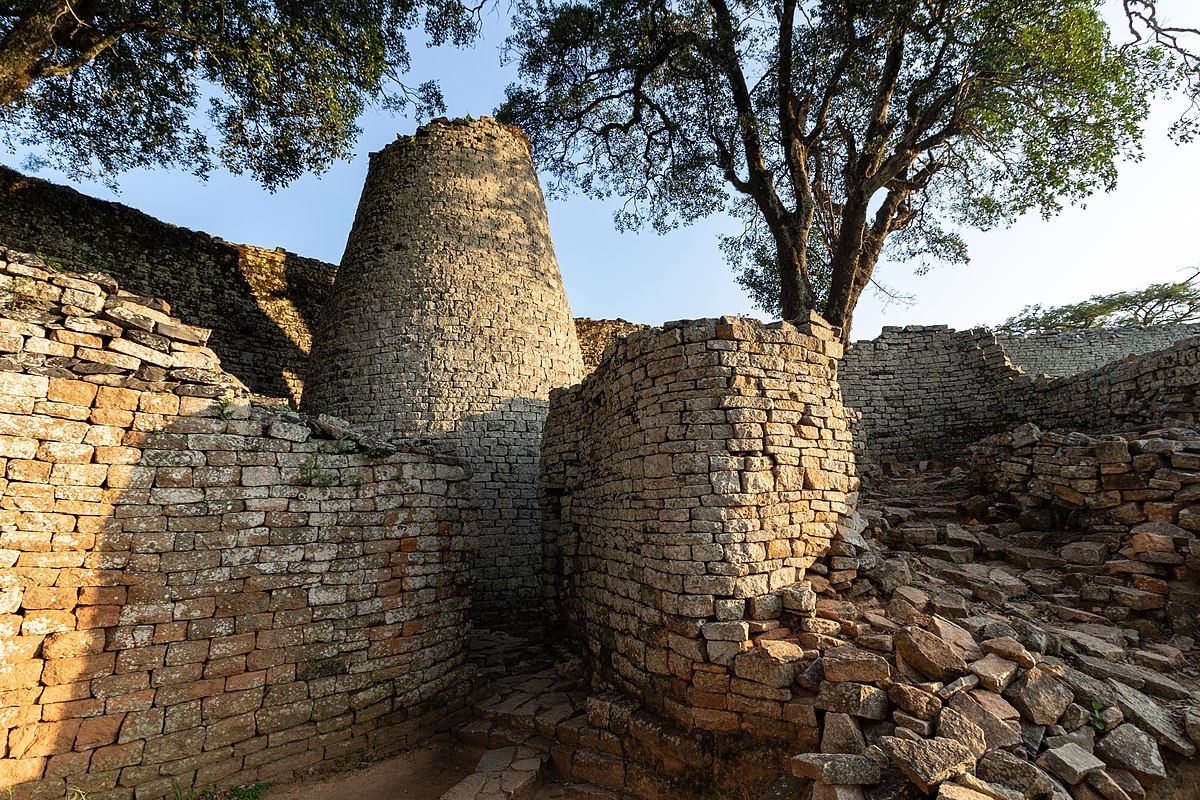
37
Great Zimbabwe (circular wall & conical tower)
Shona people, coursed granite blocks, 1000-1400 CE, Southern Zimbabwe
Built on a slope of a hill with a town attached, used as a trade center, palace, religious temple. Wall has double layers, made of ashlar masonry. Tower’s purpose unknown → queen’s room, obsevatory, etc.
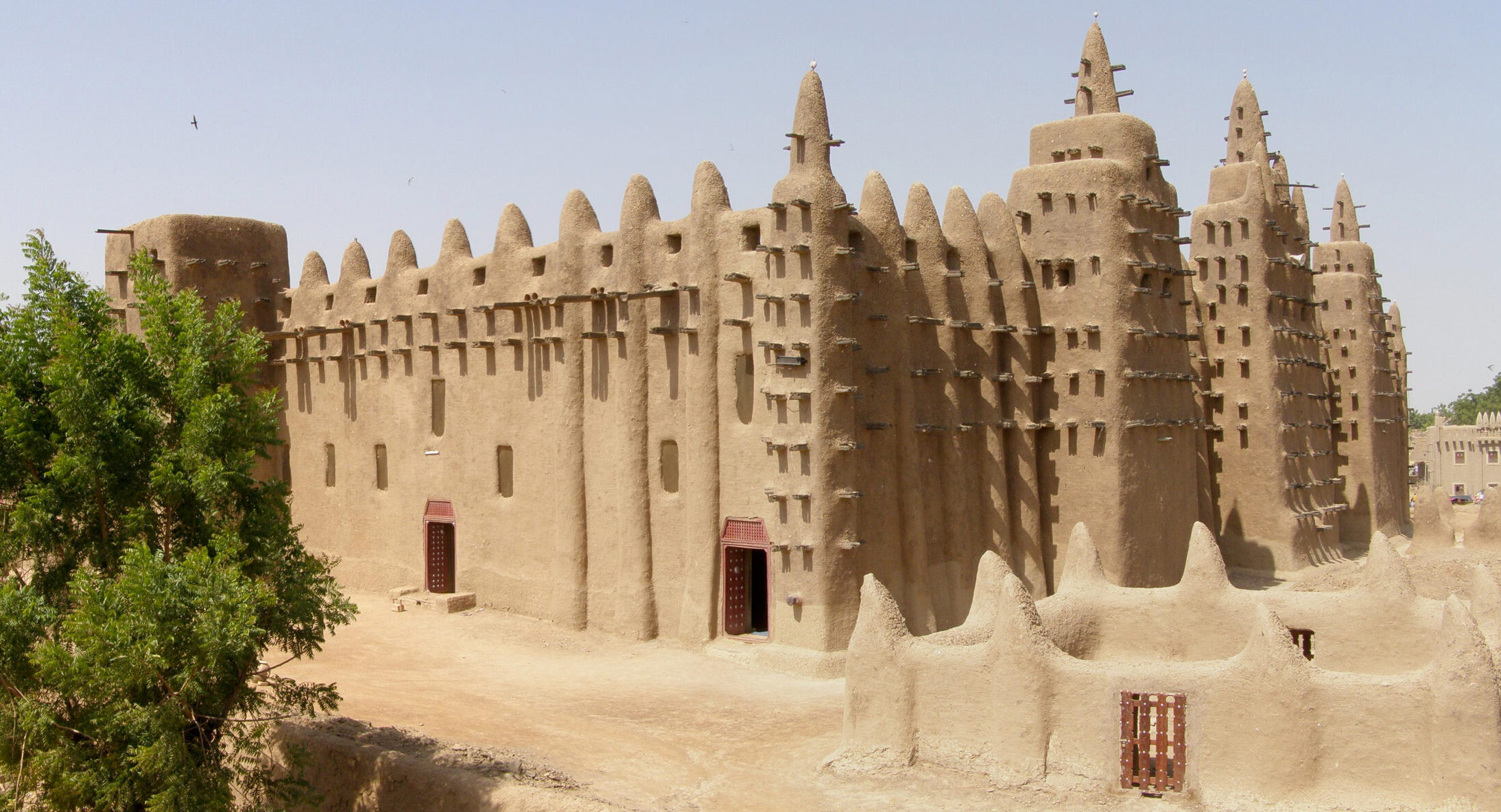
38
Great Mosque of Djenne
Malian, adobe, 1200 CE; rebuilt 1906-1907, Djenne (Mali)
Largest mud brick Islamic mosque, built to be cool and move air in desert conditions, yearly festival to rebuild and plaster it (Great Plastering Festival), symbol of Mali culture after gaining independence, ostrich eggs give it Malinke attributes
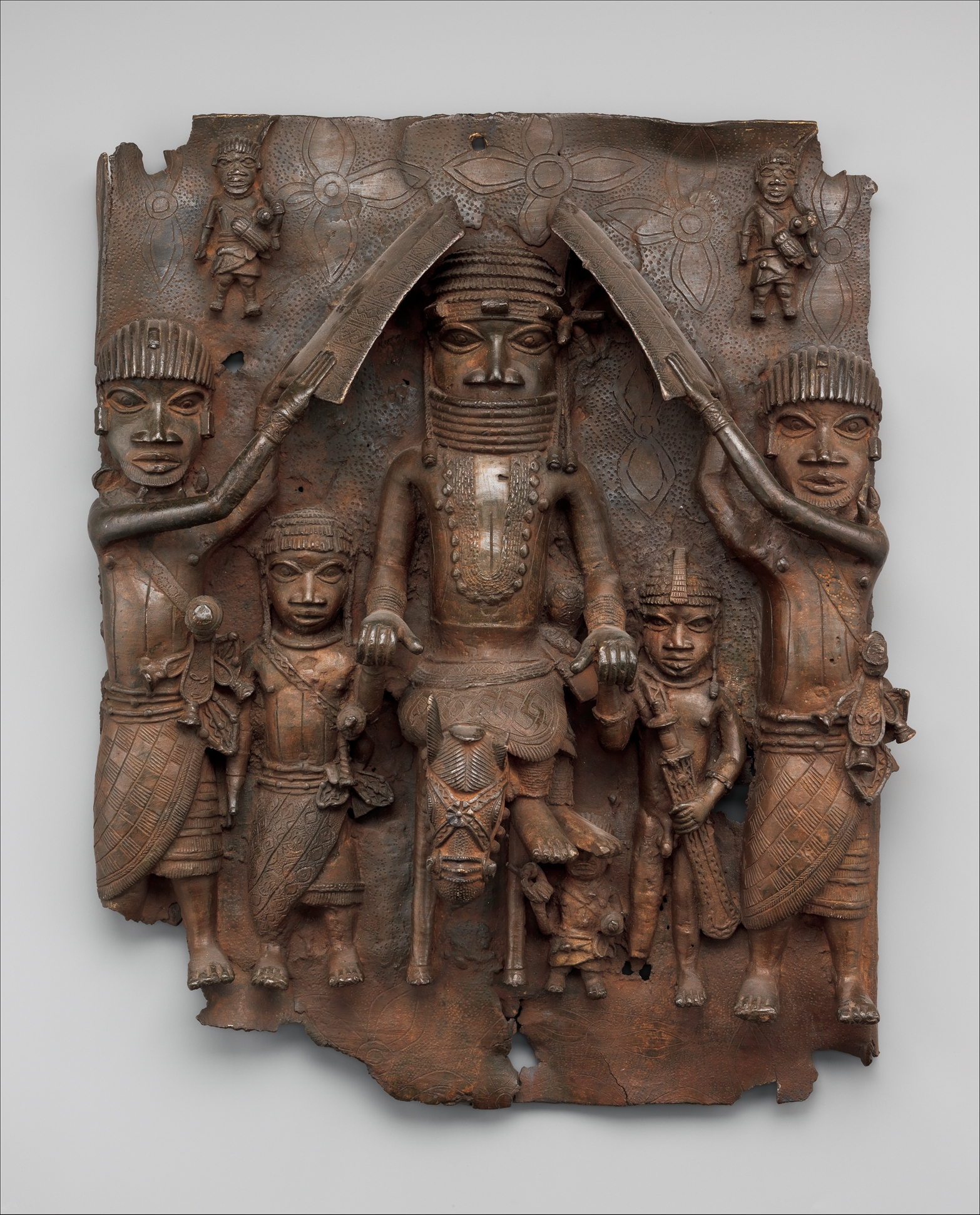
39
Wall Plaque from Oba’s Palace
Edo peoples, cast brass, 16th c. CE, Benin (Nigeria), 20” x 16”
Made with lost wax casting (European influence on Africa), more important people → larger in sculpture, large head represents wisdom in King
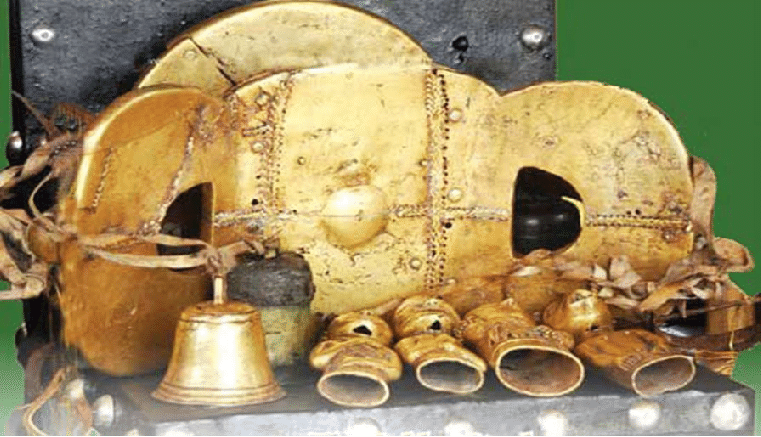
40
Sika dwa kofi (Golden Stool)
Ashanti peoples, gold over wood & cast-gold attachments, 1700 CE, South Central Ghana
Sacred object of the Ashanti peoples (national flag has image of it), not used to sit on (holds the spirit and soul of Ashanti people), Ashanti people say it came from the sky
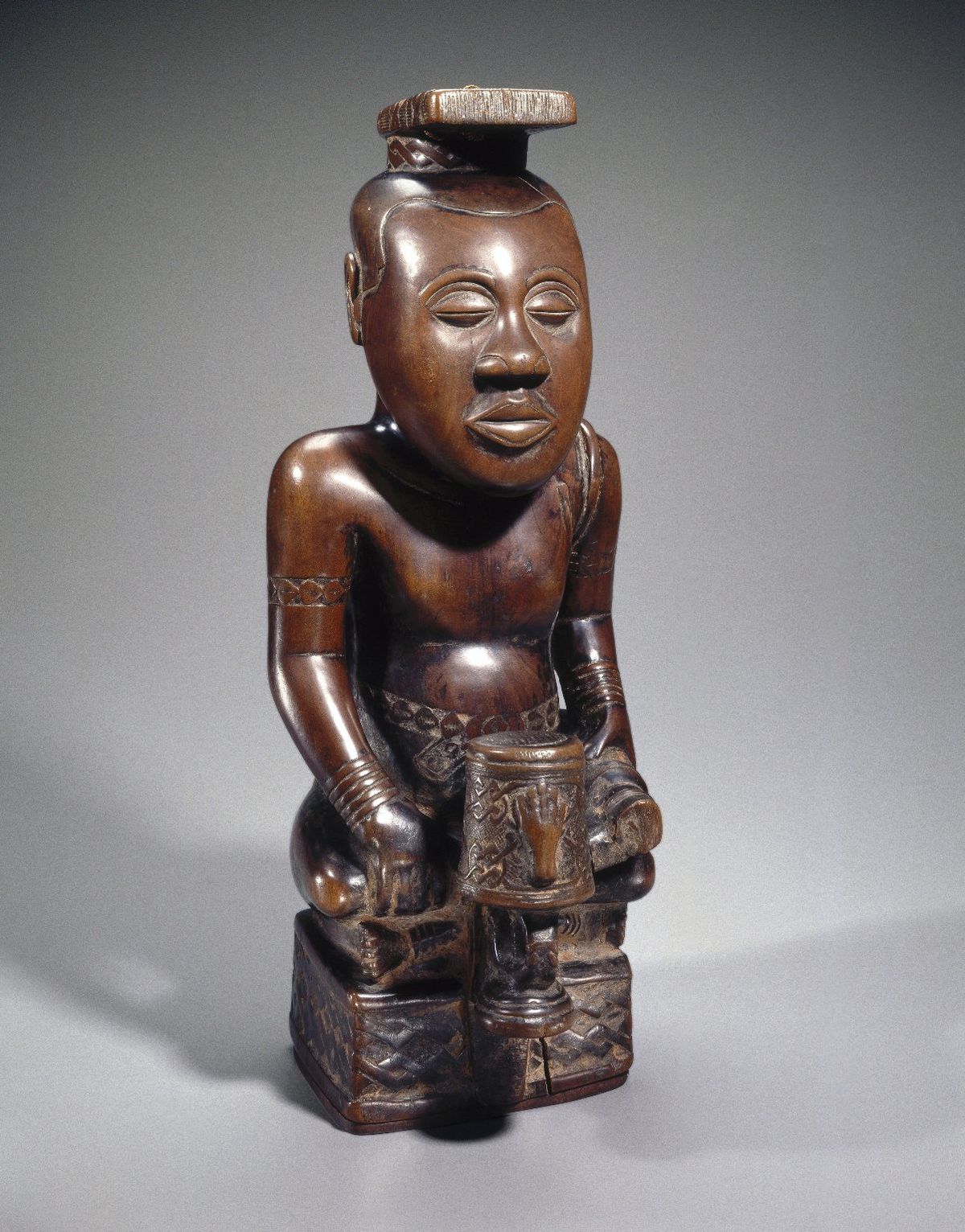
41
Ndop (portrait figure) of King Mishe mi Shyang maMbul
Kuba peoples, wood, 1760-1780 CE, Democratic Republic of Congo, 19” tall
the stylized idea of a King, totem of the King’s soul (commemoration of a deceased king), closed eyes show dissonance from worldly problems, the large head shows wisdom, small sword shows the power

42
Power Figure (Nkisi n’ Kondi)
Kongo peoples, wood & metal, Late 19th c. CE, Democratic Republic of Congo, 24” tall
totem object, when one had a problem → stick metal piece (licked first) into the figure (deeper = bigger problem) put medicine (herbs, seeds, etc.) spirits would be awakened to fix problems
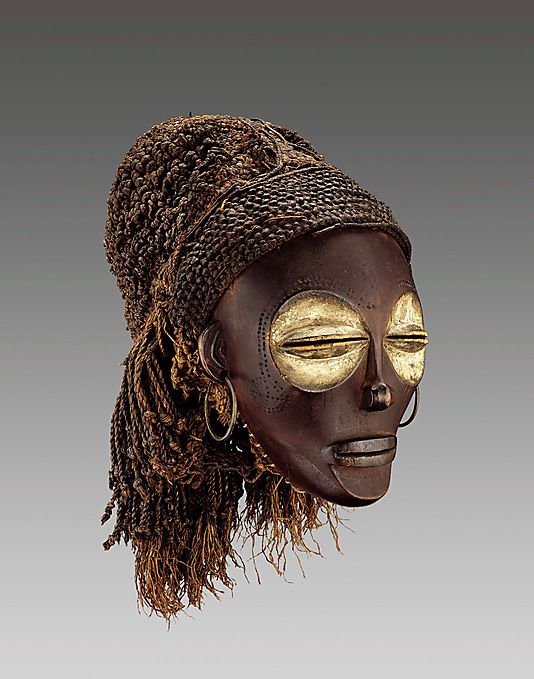
43
Female (Pwo) mask
Chokwe people, wood, fiber, pigment & metal, Late 19th - 20th c. CE, Democratic Republic of Congo, 15” tall
Made by men and worn by men to honor mothers giving birth, ideal mother represents wisdom, fertility, and spirituality → ritual dance done to bring fertility to a community (also to welcome men into manhood)
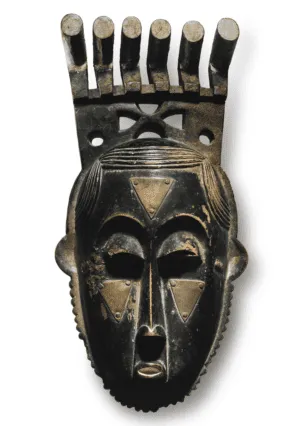
44
Mblo (portrait mask)
Baule peoples, wood & pigment, early 20th c. CE, Cote d’Ivoire, 14” tall
Made to honor a living person (Moyo Yanso), triangles show liveliness (blush), scratches for old age or wisdom, stylized version of a person, dance performed by men to commemorate that person
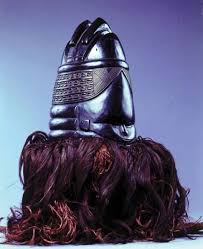
45
Bundu mask
Sande society of the Mende peoples, wood, cloth, & fiber, 19th - 20th c. CE, West African forest of Sierra Lione & Liberia
For girls coming of age becoming a new woman (made by a carver who would see a dream → customized), girls taken to the jungle & secluded, covered in white clay (ugly), genitally mutilated, taught to dance for the ceremony, brought back and wore masks, honored water spirit Sowei
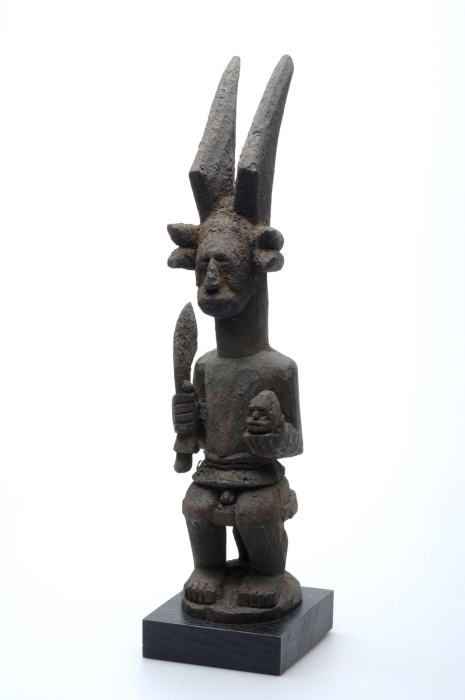
46
Ikenga (Shrine figure)
Igblo peoples, wood, 19th - 20th c., Nigeria
masculine figure, right hand = power, specific to owner (when owner dies, figure is destroyed), height = power (possibly), totem
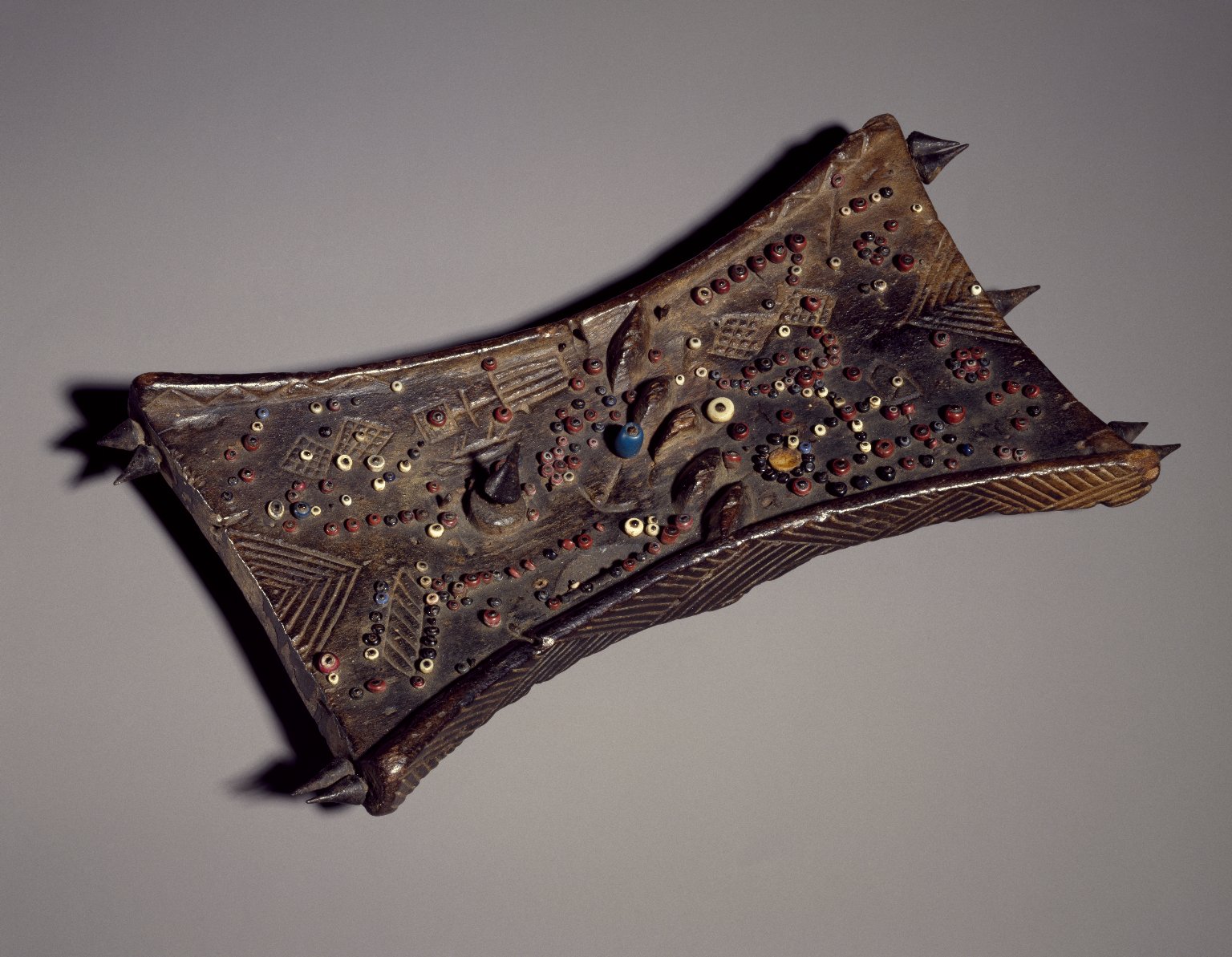
47
Lukasa (Memory board)
Mbudye society of Luba peoples, wood, beads, & metal, 19th - 20th c. CE, Democratic Republic of Congo
History scholar in society uses if (index finger) like the navigation Chart as a mnemonic device to recite the history of people, now written history in this society
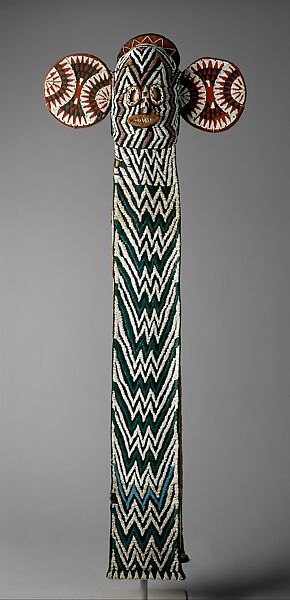
48
Aka Elephant Mask
Bamileke peoples, wood, woven raffia, cloth, & beads, 19th - 20th c. CE, Cameroon (western grass fields region), 4’9” long
used for rituals bu Kuosi (Bamileke nobility) to honor kings authority, beads represent different things, beads traded for enslaved people by Europeans, culture based on animals and nature → elephants to honor king
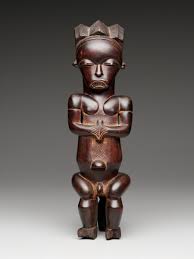
49
Reliquary figure (byeri)
Fang people, wood, 19th - 20th c. CE, Southern Cameroon, 23” tall
Nomadic people used to carry ashes, totem: conduit for the supernatural (keeps bad spirits away - talisman), would sit on box, ideal person, outie belly button = connection to spiritual things and the past (moving between realms)
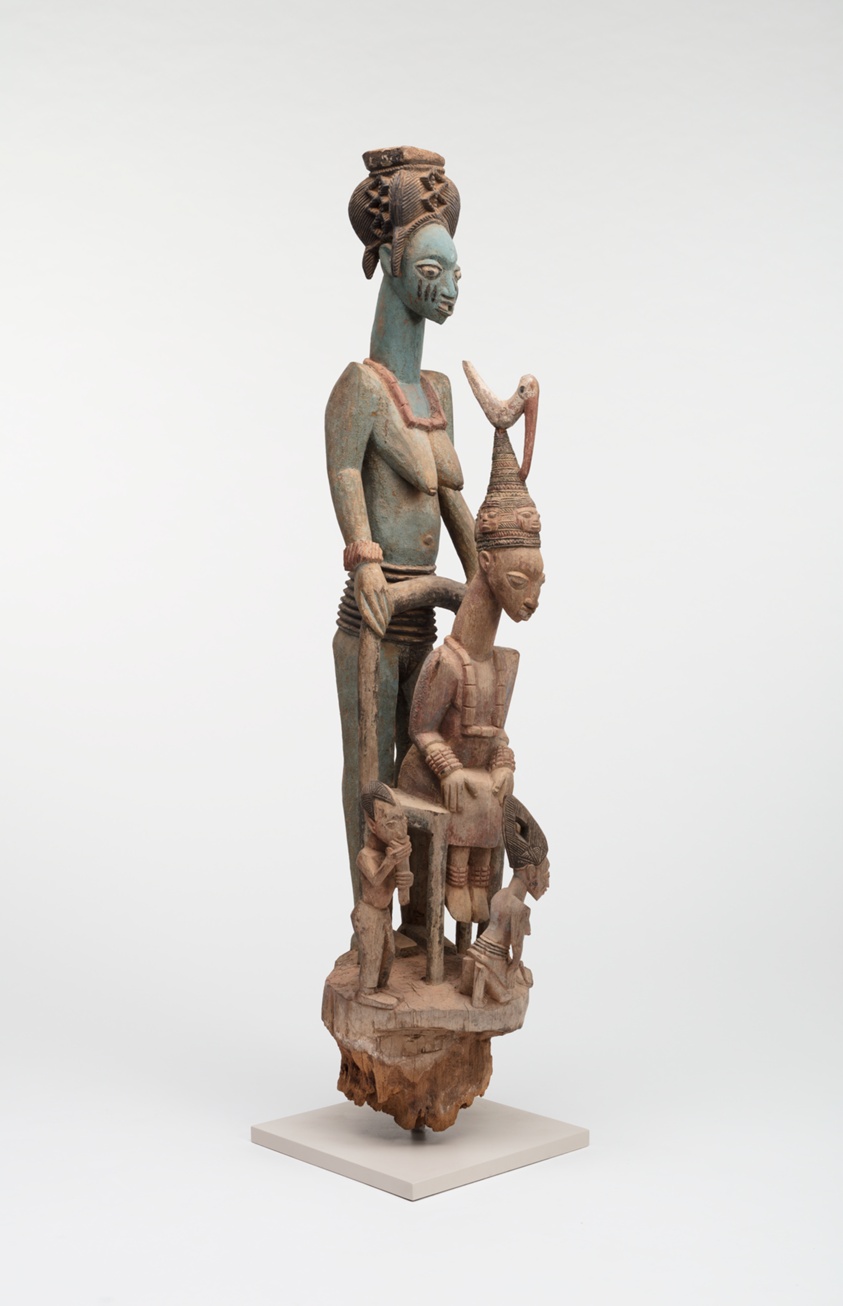
50
Veranda post of enthroned king and senior wife (Opo Ogoga)
Olaue of Ise, Yoruba peoples, wood & pigment, 1910 - 1914 CE, Nigeria, 5’ tall
depicts power of women in society, caryatid, woman as strong support → crowns king and guides him (senior wife)
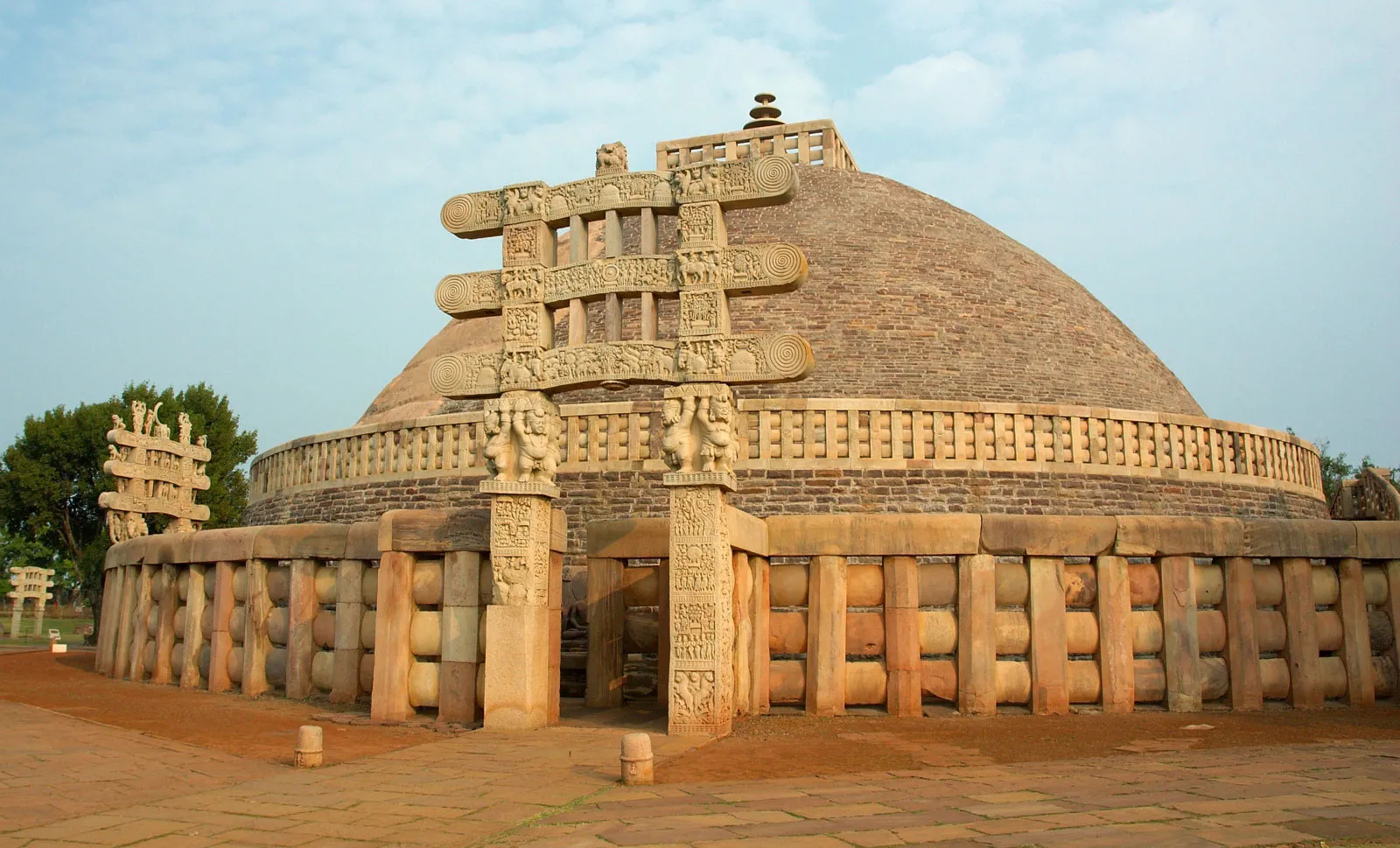
51
Great Stupa at Sanchi
Indian (Mauryan & late Sunga dynasty), stone masonry & sandstone dome, 300 BCE - 100 CE, Madhya Pradesh (India), 118’ diameter, 55’ tall, Buddhist
Thought to hold the Buddha’s ashes, the Stupa design comes from Hinduism, axis mundi, circumambulates the structure to get in touch with spirituality and depicts Buddhas’ life starting at the East gate
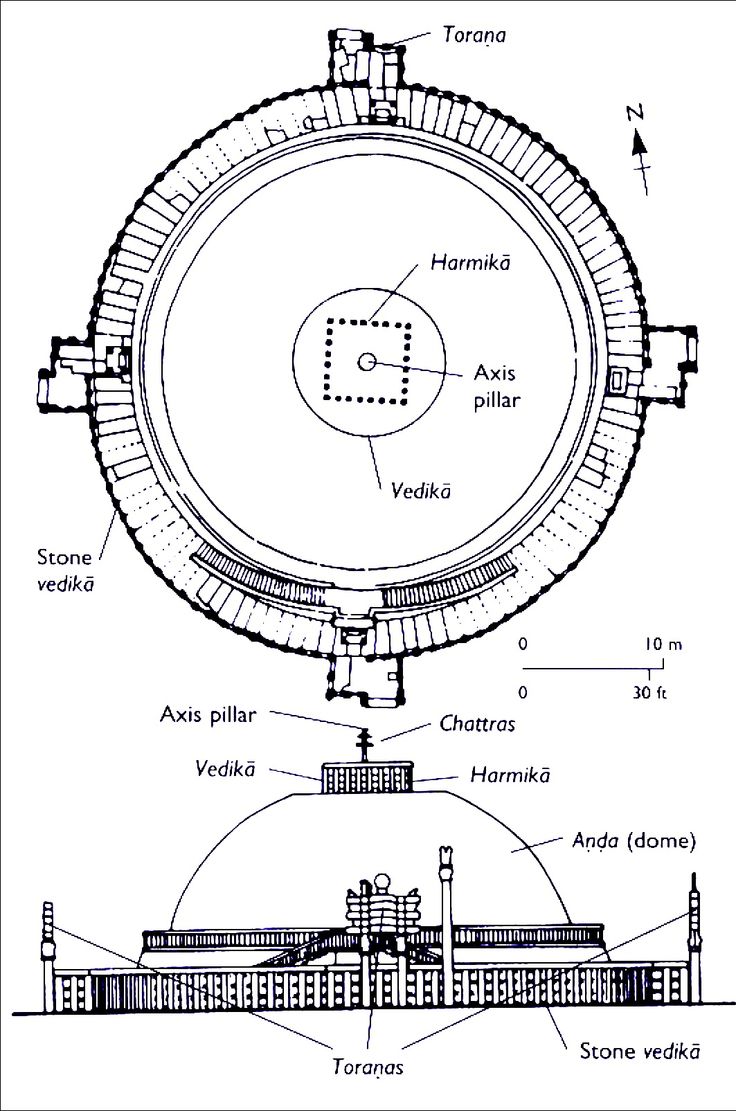
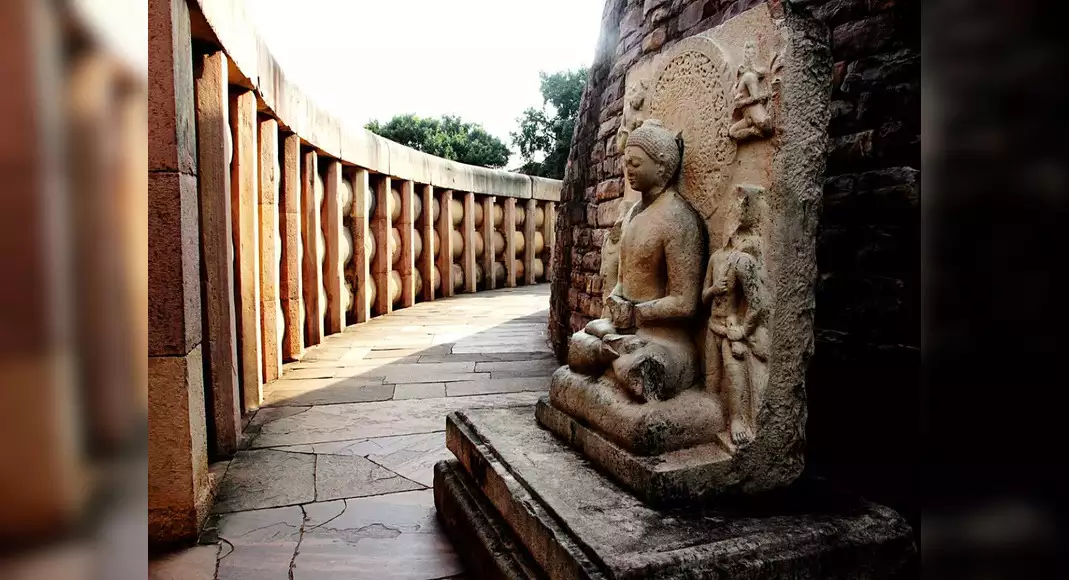
51 - sub-piece
Buddha sculptures
Ushnisha: top know on the top of head (humble crown), long earlobes indicate former princely status, Urna: red dot on forehead, in lotus pose (spirituality)
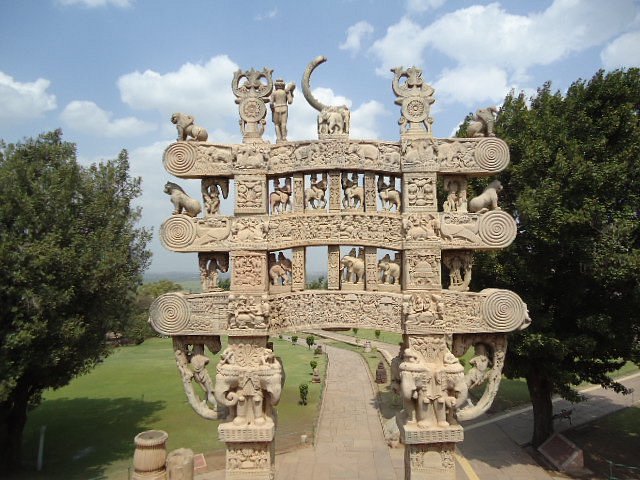
51 - sub-piece
Northern Gate
Depicts Buddhas’ nirvana, has Yakshi (Hindu and Buddhist fertility figures, covered in figures and geometric patterns
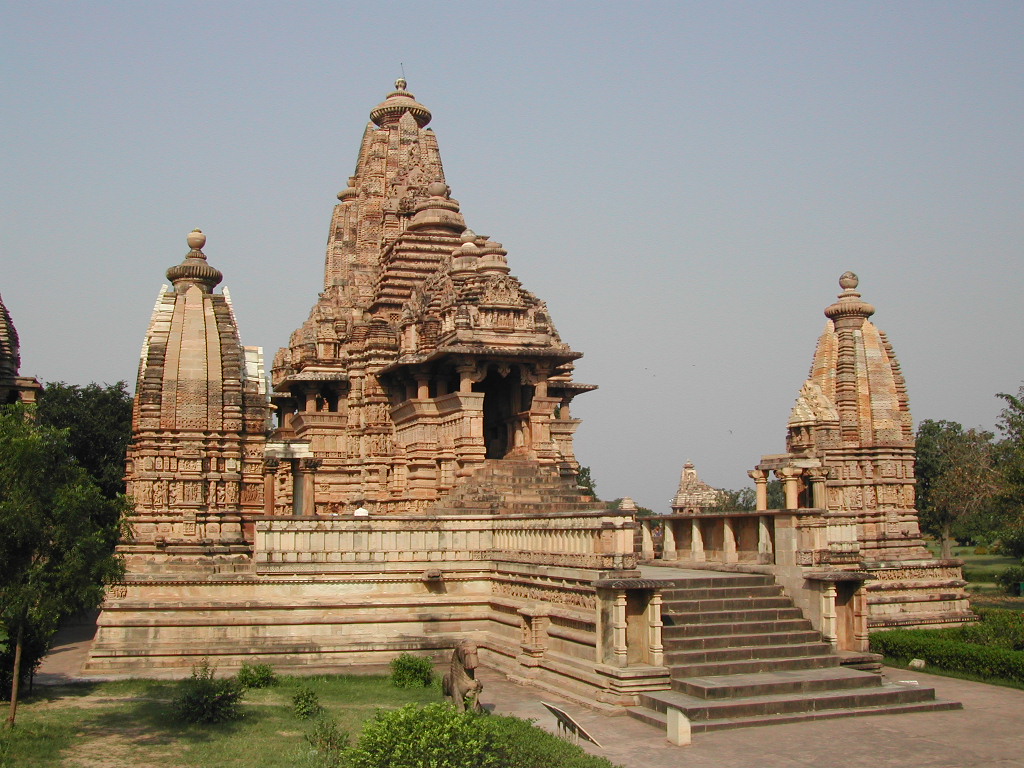
52
Lakshmana Temple
Indian (Chandella Dynasty), sandstone, 930-950 CE, Khajuraho (India), 85’ tall
A Hindu temple dedicated to Vishnu (god of preservation) → preserving human life, covered with images of couples having intercourse, next to mountain (home of Shiva), hypostyle hall, Panchayatan plan (main temple w/ four surrounding shrines
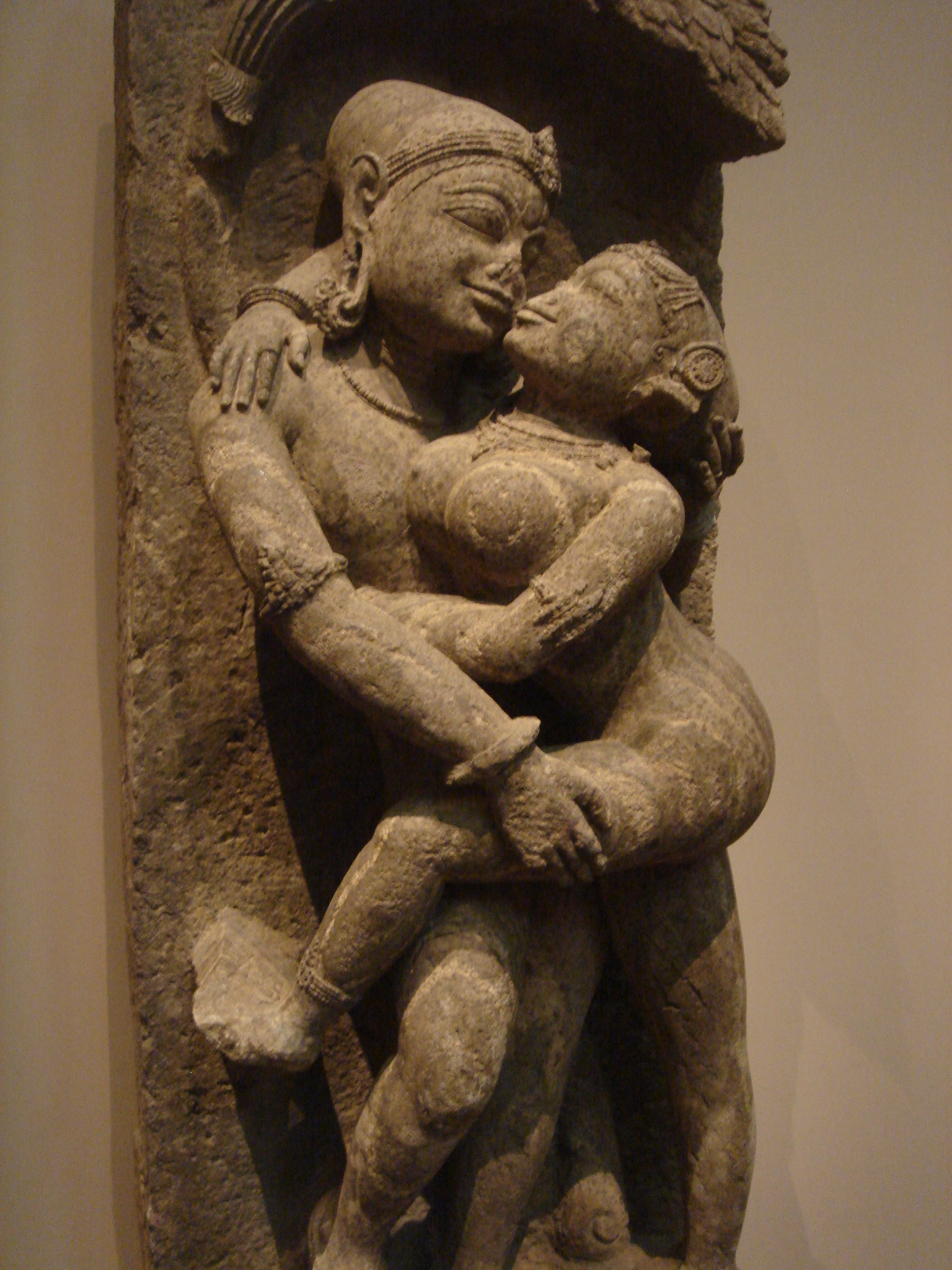
52 - sub-piece
Maithuna
Couples copulating, male & female energy → one can’t exist without the other, tantric sex, brought closer to god’s (female & male), all figures have jewelry or some clothes
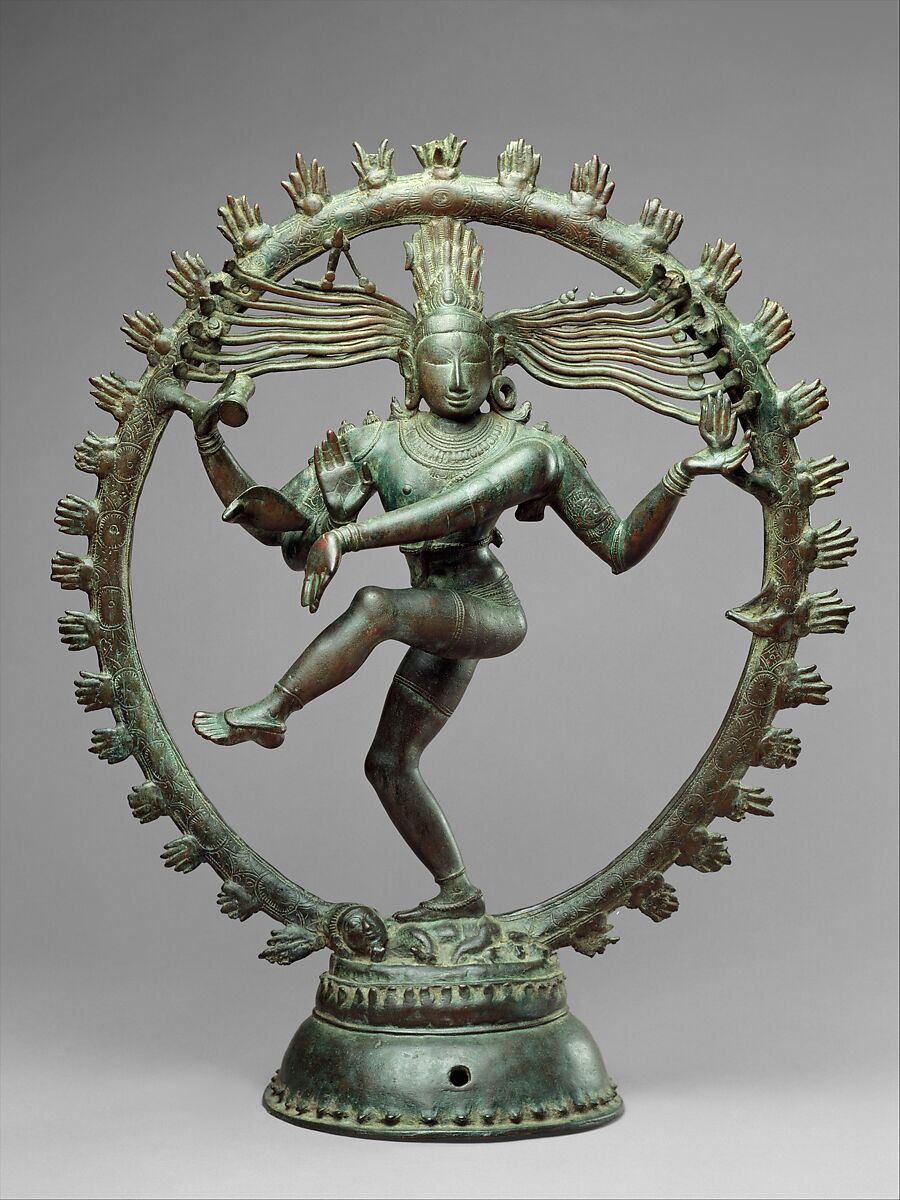
53
Shiva as Lord of the Dance (Nataraja)
Indian (Chola Dynasty), cast bronze, 11th c. CE, Tamil Nadu (India), 27” tall
Hindu sculpture of Shiva the destroyer/transformer, flaming nimbus represents life, glory, & power, hair comes out as a cobra head, stepping on demon of ignorance, four arms representing time, don’t be afraid, flame of destruction, spiritual fulfillment, dancing shows change, embodiment of gods
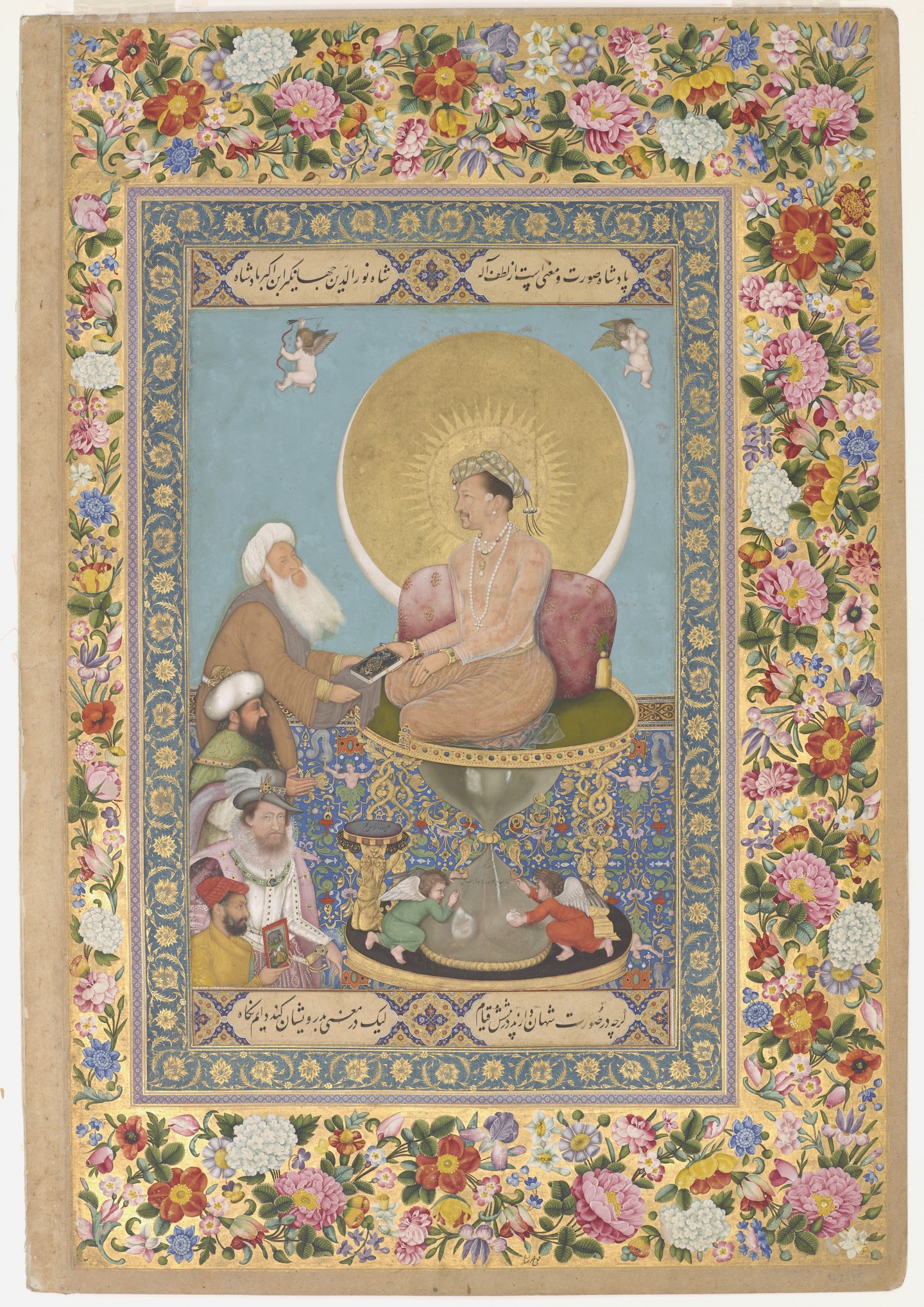
54
Jahangir Preferring a Sufi Shaikh to Kings
Bitchr, Mughal, watercolor, gold, & ink on paper, 1620 CE, South Asia, 10” tall
Islamic miniature, Skaikh (religious figure) handing Jahangir (king) a holy book → in front of other kings and important figures, angles on top, holiness more important than other kings, sends message of ideal person, not a religious piece (figurative work)
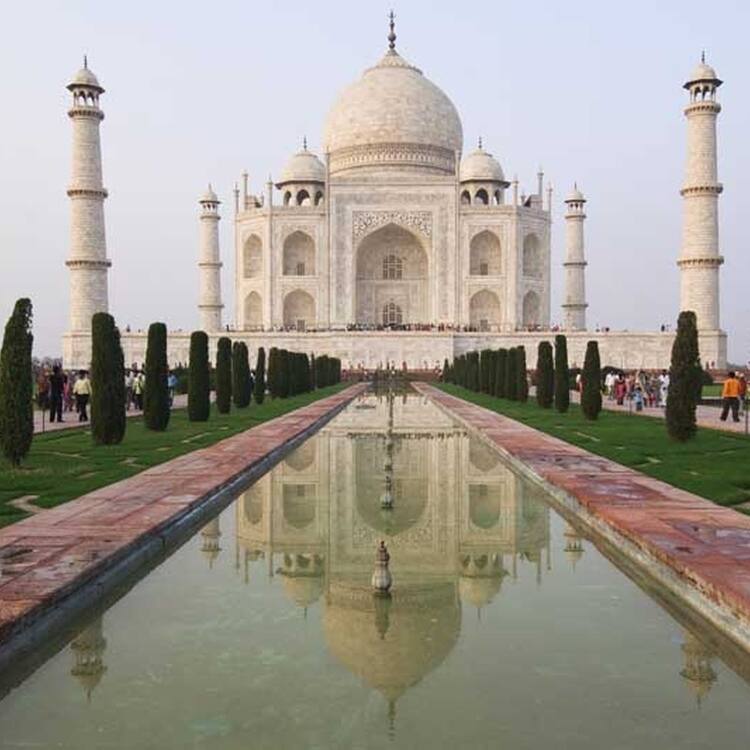
55
Taj Mahal
Masons, marble workers, mosaics, decorators working for Ustad Ahmad Lahori, stone masonry & marble inlay, 1632 - 1653 CE, Agra (Uttar Pradesh, India), 240’ across
Islamic with Indian mausoleum, interplay of light & shadow, 4 minarets tilted outward, forecourt w/ red sandstone, garden (human power), connection to paradise, minarets are ornamental, verses of the Qur’an incised on the outside
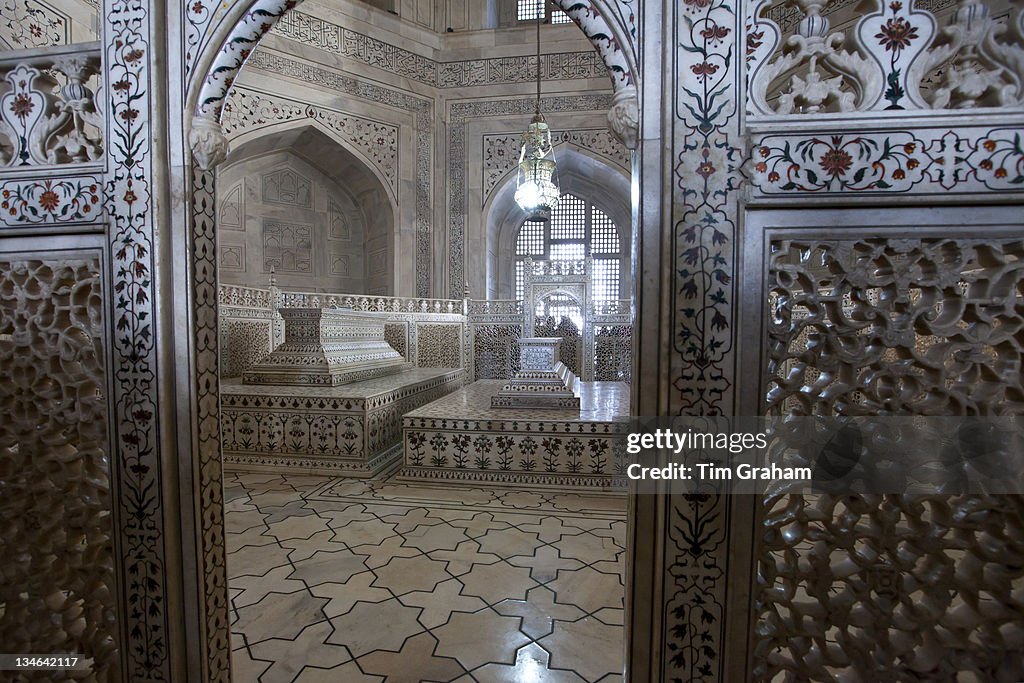
55 - sub-piece
Centrotaph
contains the tomb of Mahal, wife of the King, who died after giving birth to her 14th child, commemoration, Taj = crown, emperor eventually buried with this wife
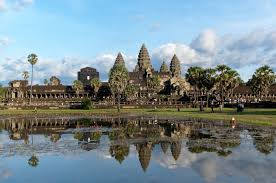
56
Angkor, Temple of Angkor Wat & City of Angkor Thom
Cambodian (Angkor Dynasty), stone masonry & sandstone, 800 - 1440 CE, Cambodia, Covers 500 acres
Originally Hindu but was converted to Buddhism, moat (water reflects cosmos), axis mundi, covered in drawings of figures both Hindu and Buddhist, 100+ towers, main temple reflects mountain (home of Hindu gods), Hindu temple outside of India
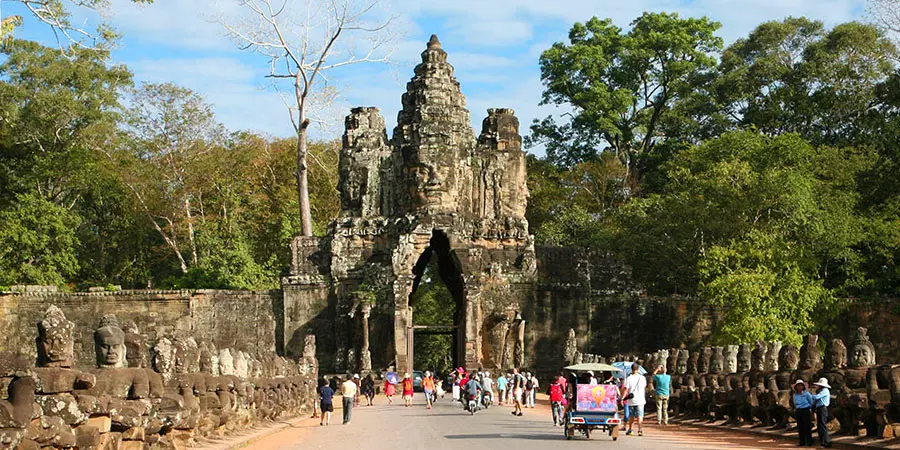
56 - sub-piece
South Gate of Angkor Thom
54 gods and 54 demons on either side, 108 is an important number for both Buddhists and Hindus, face is Jayavarman VIII (King)
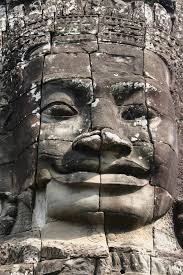
56 - sub-piece
Jayavarman VIII as Buddha
huge pieces across Temple, depicts Jayavarman as above worldly problems (propaganda), Ideal man
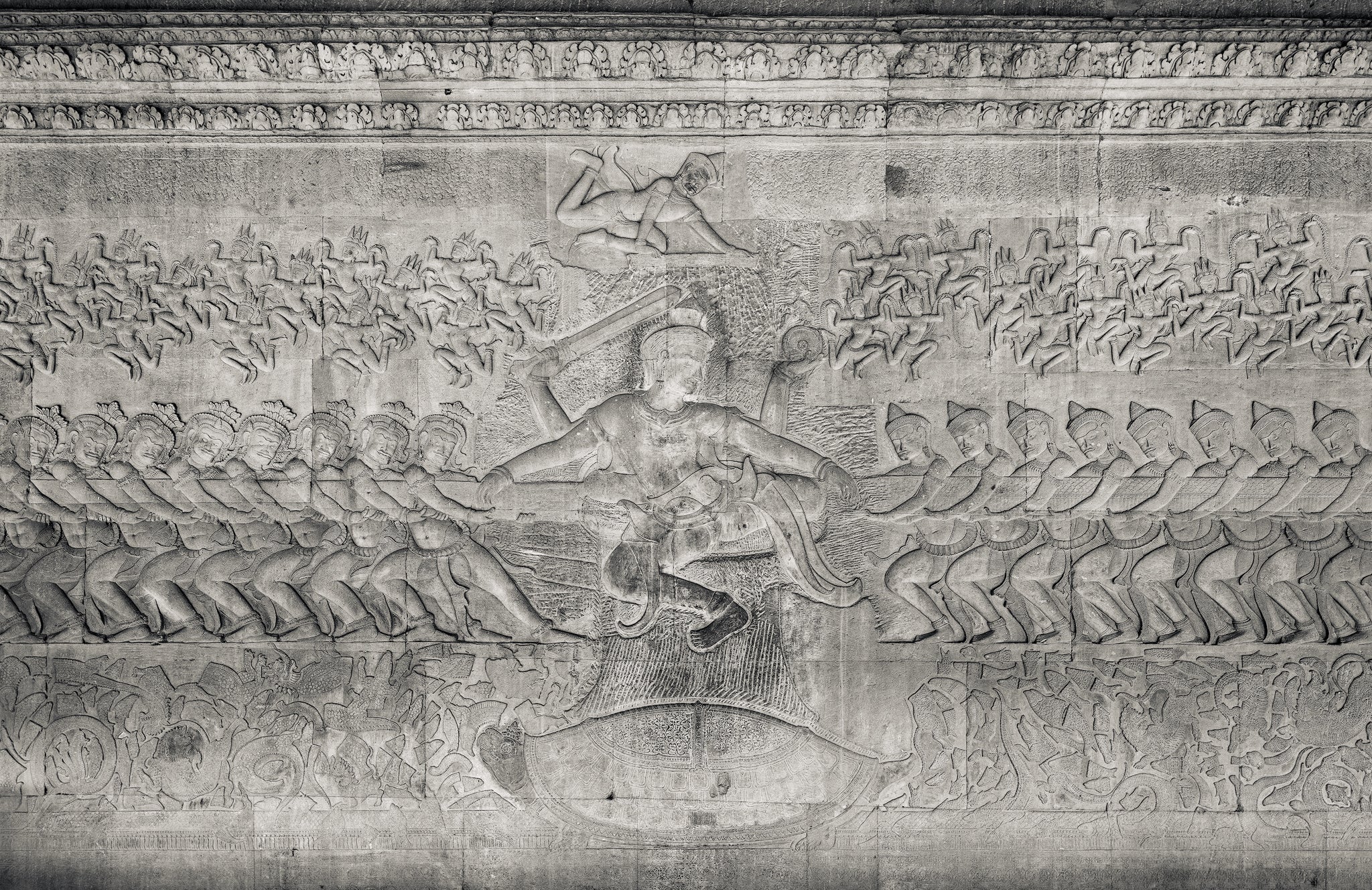
56 - sub-piece
Churning of the Sea of Milk
60’ long relief sculpture, gain elixir of life (big tug o war) @ bottom of ocean, god’s won over demons (creation story), Jayavarman = Vishnu (center god)
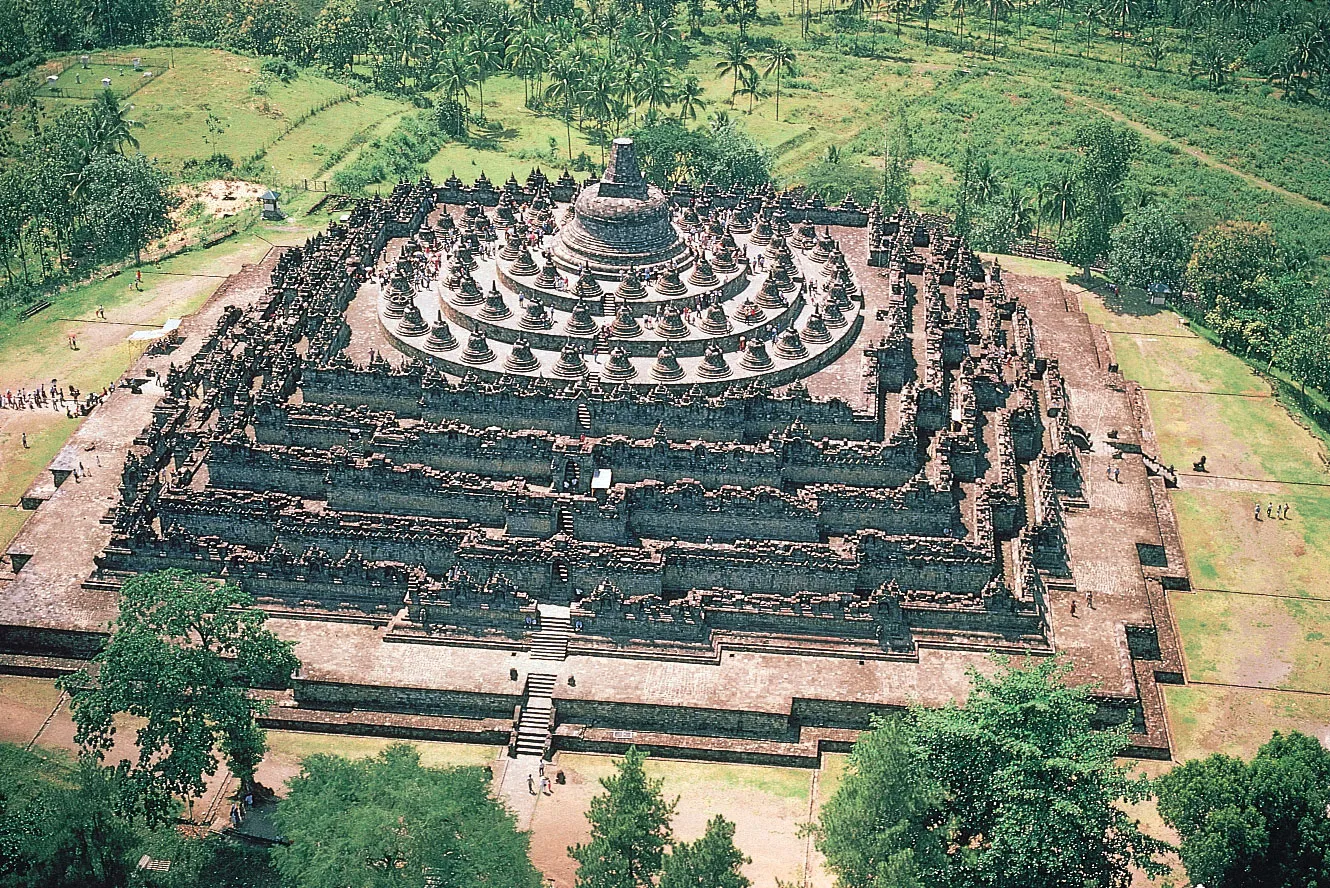
57
Borobudur Temple
Indonesian (Sailendra Dynasty), volcanic stone masonry, 750 - 842 CE, Central Java (Indonesia), 115’ tall
Buddhist, in the shape of a mandala (diagram of the cosmos), axis mundi, circumambulate to get to the top, tells story of Buddha’s life
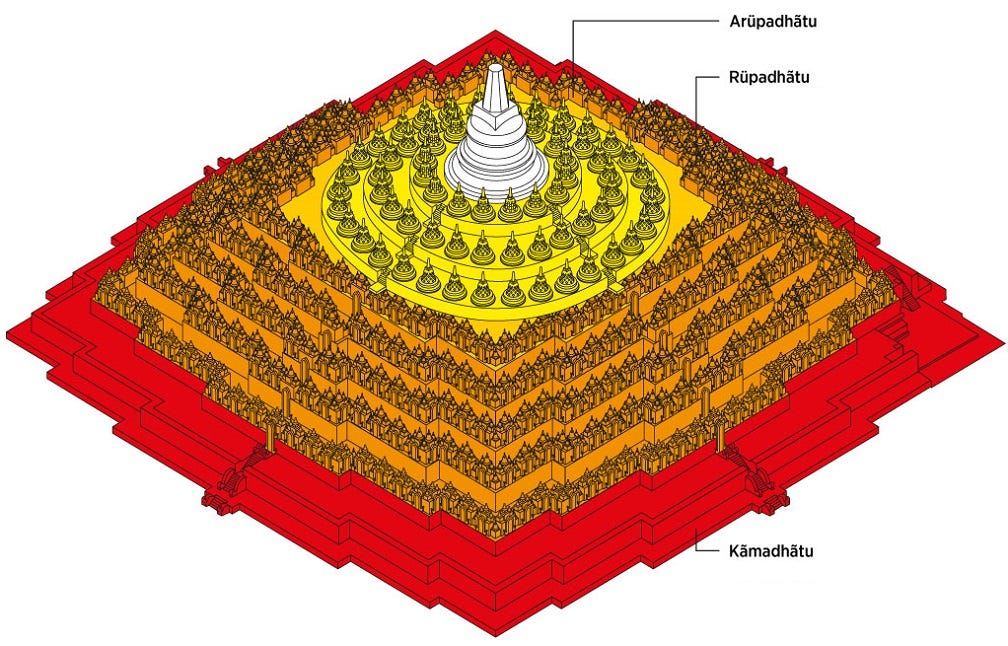
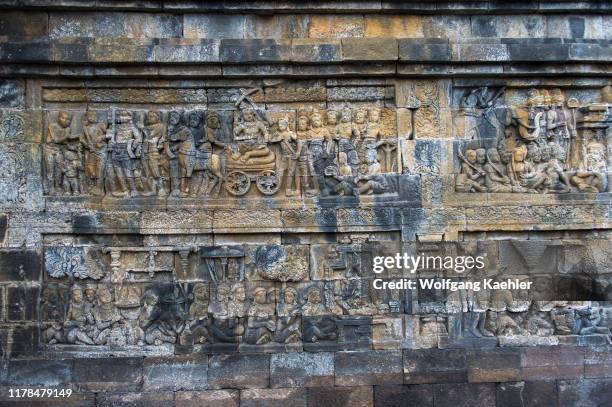
57 - sub-piece
Queen Maya Riding a Horse Carriage Retreating to Lumbini to Give Birth to Prince Siddhartha Gautama
Human form (of Buddha), at bottom of Temple, represents journey as a human
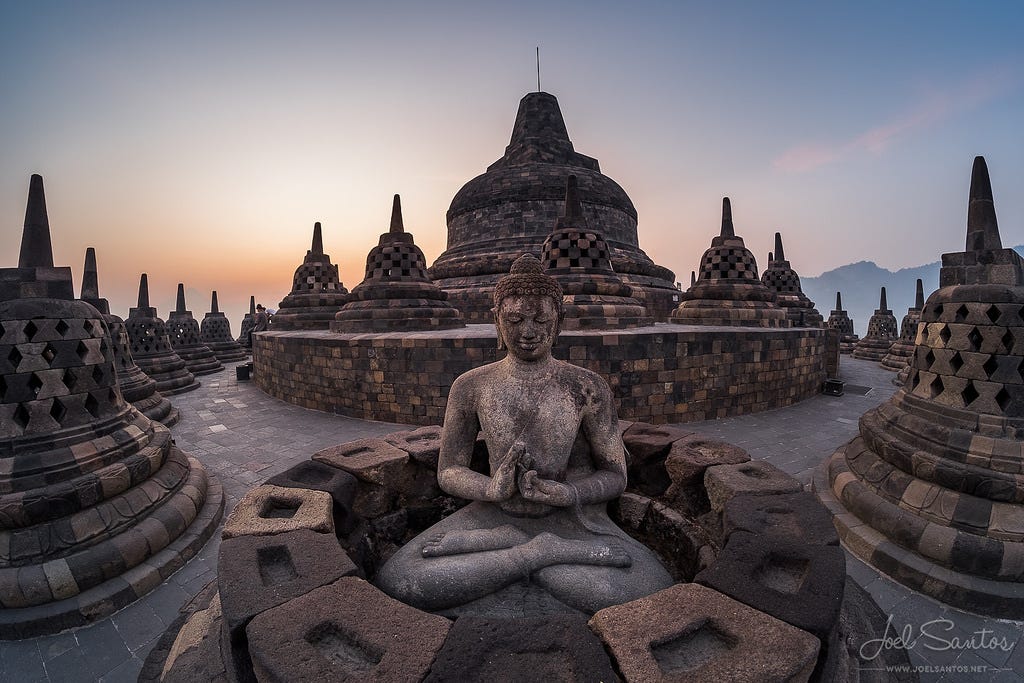
57 - sub-piece
Details from the Top Level of Borobudur Temple
72 stupas, seated Buddha → enlightened

58
Terra Cotta Warrior
Chinese (Qin), painted terra cotta, 221-209 BCE, most men 6’ tall
Mausoleum of the first Qin emperor, each one individualized, honored first Qin emperor, protects emperor in after life, known to be a harsh leader who pushed Confucianism, workers buried there as well, royal court depicted, chariots and weaponry
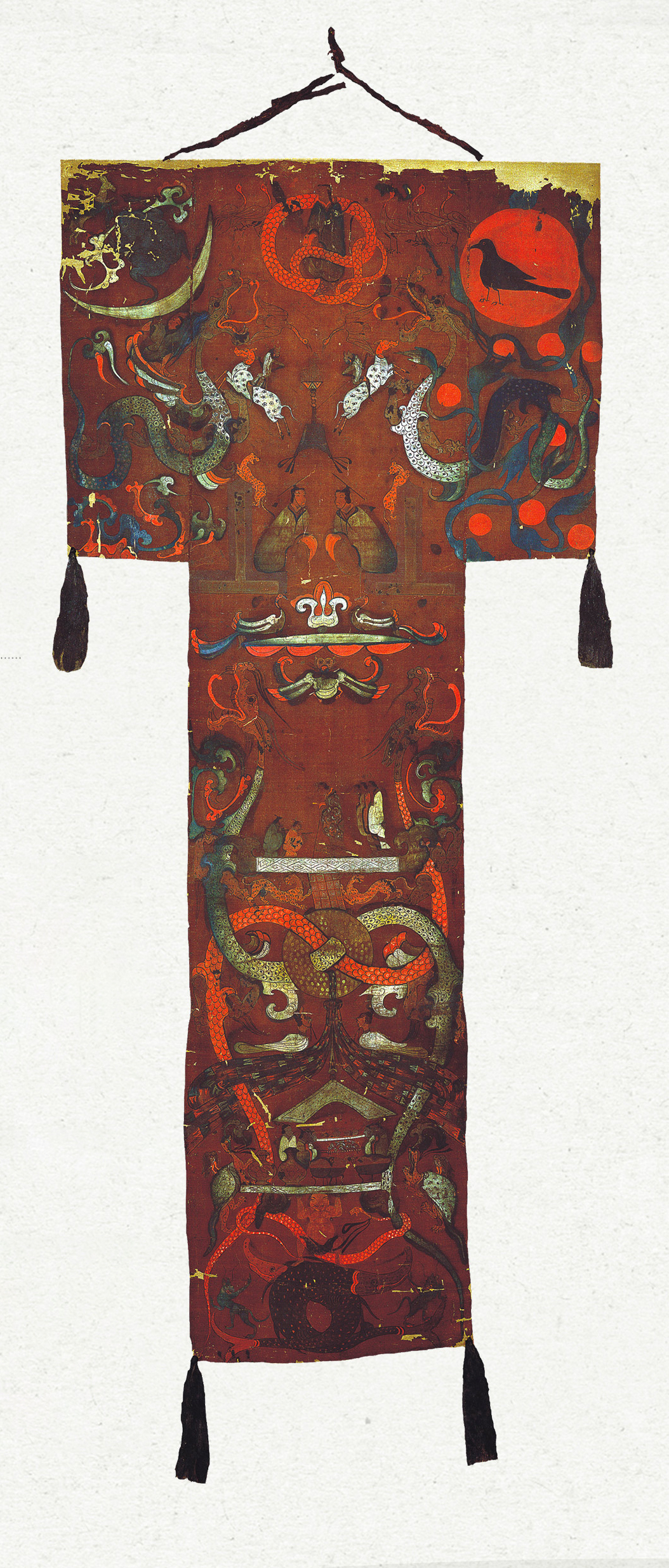
59
Funeral banner of Lady Dai
Chinese (Han), painted silk, 180 BCE, 6’7” long
A funerary item that depicts the afterlife journey of Lady Dai, featuring symbolic imagery and figures dragons, broken into 3 sections depicting heaven Earth and afterworld, Bi and cong placed around Lady Dai, Ying and Yang
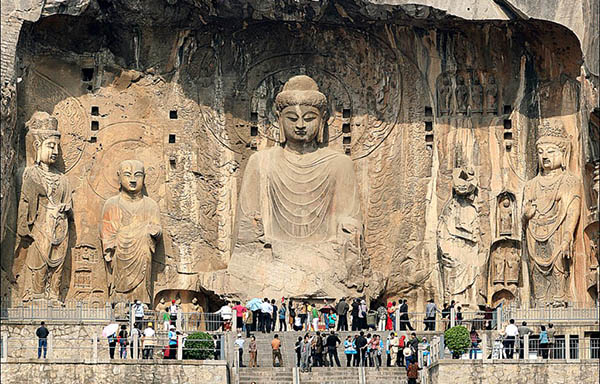
60
Buddha at Longmen Caves
Chinese (Sui, Tang, Song), limestone, 493 - 1127 CE, Luoyang (China), Largest Buddha: 57’
Largest Buddha sculpture, 100+ mini Buddha sculptures, main cave 9 figures (Buddha, disciples, Bodhisattva, Lokapala, Vajrapani), commissioned by Tang dynasty (Empress Wu used as a model for Buddha), Chinese Buddha (rounder face, chubbier), 2300 caves with Buddhas
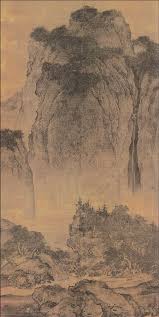
61
Travelers Among Mountains and Streams
Fan Kuan, Chinese (Song), ink & color on silk, 1000 CE, 7’ x 3’4”
Literati (Daoist), permanence of nature vs impermanence of man, monochrome → texture, space between fore & middle ground, Ying and Yang, probably done in artists mind, man can create a landscape, man v. nature
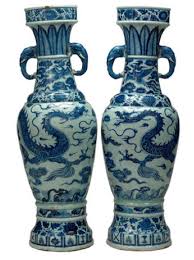
62
The David Vases
Chinese (Yuan), white porcelain w/ cobalt blue under-glaze, 1351 CE, 2’
Porcelain (Chinese clay with Italian word), cobalt from middle-east, dragons and Pheonix’s (Daoist), elephant head handles (Indian), geometric plant motifs (Islamic style), given to Daoist Temple by a general, bought by Sir Percible David
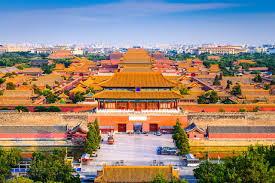
63
Forbidden City
Chinese (Ming), stone masonry, marble, brick, wood, & ceramic tile, 15th c. CE (additions), Beijing (China), 178 acres
cannonball proof walls, architecture based on 3, curved pagoda roof for protection, rebuilt multiple times, used by emperor as a sanctuary within Beijing, heaven inside
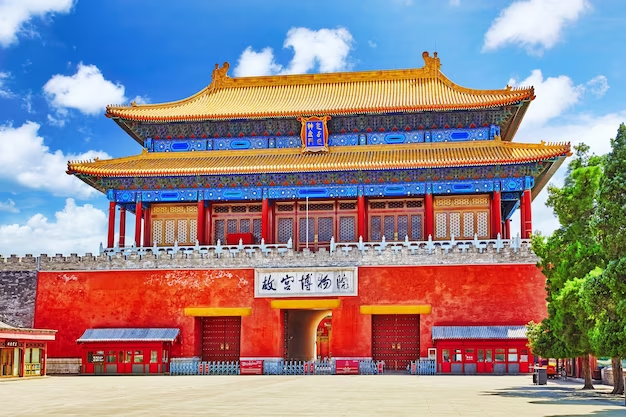
63 - sub-piece
Gate of Divine Might
middle door for emperor only, colors: yellow & red =sun, blue=heavens, white=purity
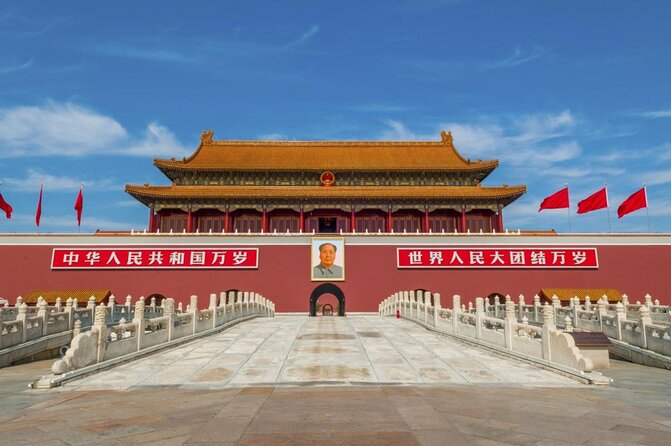
63 - sub-piece
Gate of Heavenly Peace
Giant Mao Zedong portrait, Tianaman, Long live the republic and Long live the unity of worlds people on either side of portrait
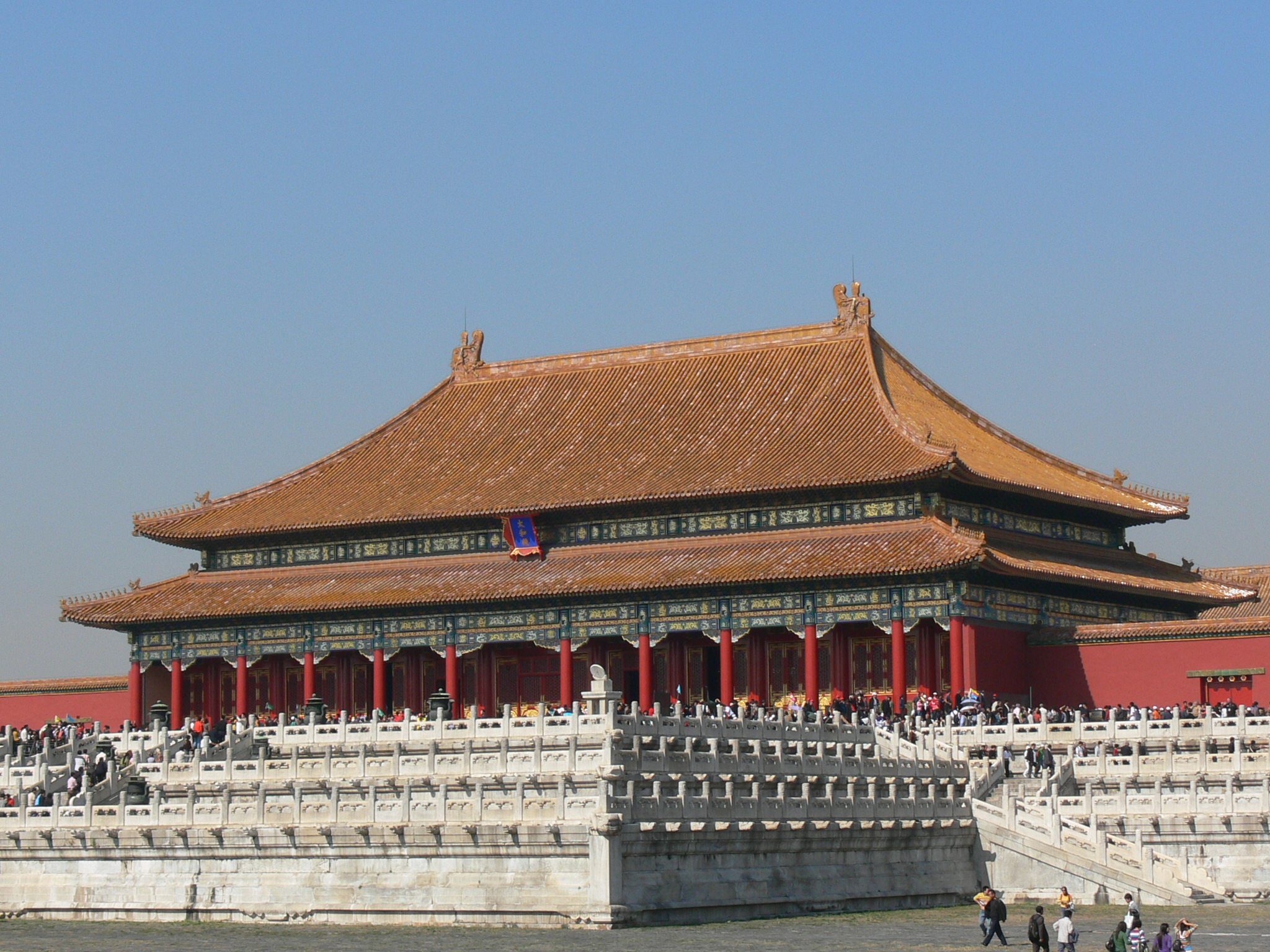
63 - sub-piece
Hall of Supreme Harmony
9 doors, 9 dragons, etc. emperors home, throne room, large ceremonies held in front
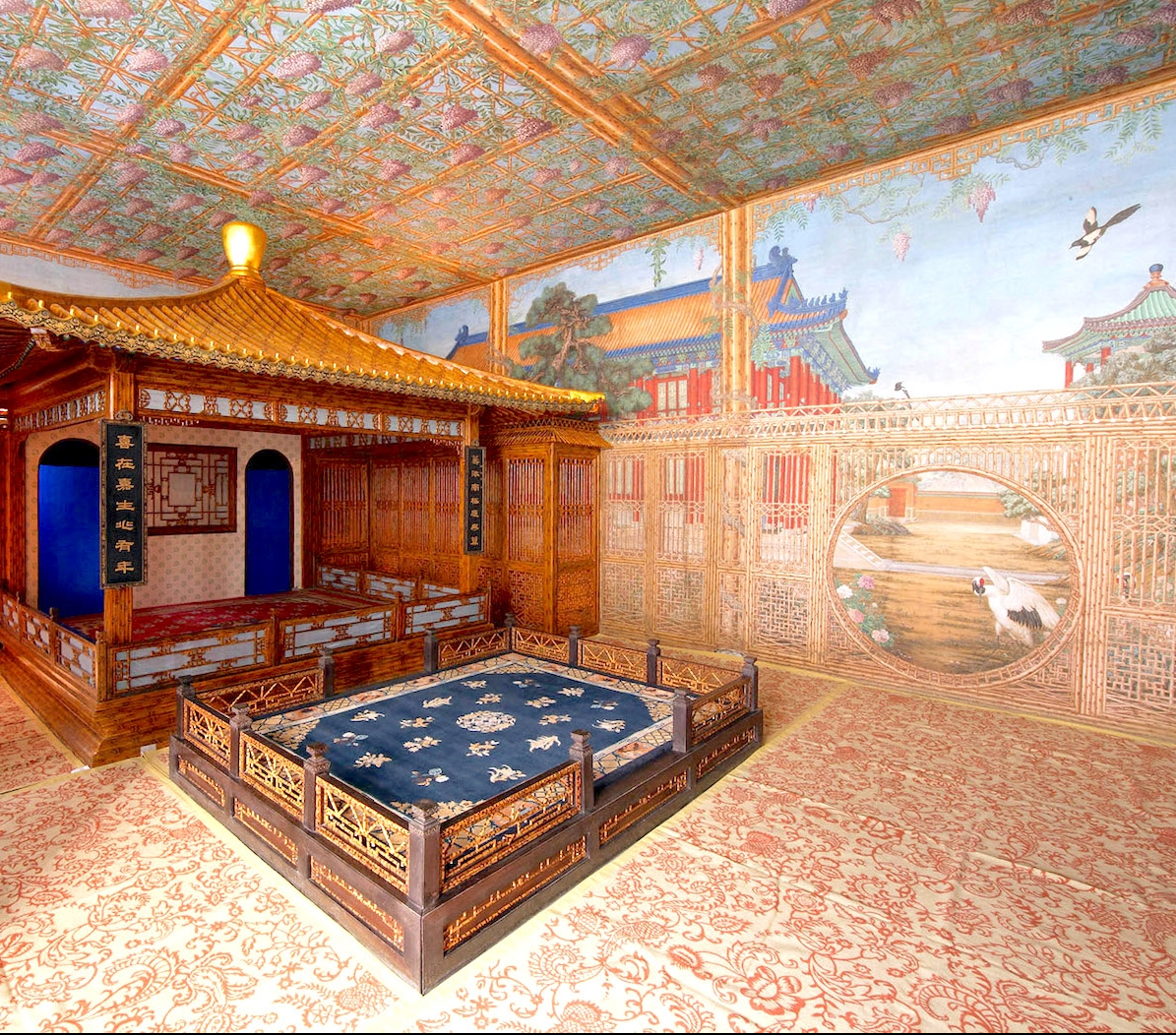
63 - sub-piece
Palace of Tranquility & Longevity
Emperors retirement home (modeled after Forbidden City), Trompe l’oeil on ceiling
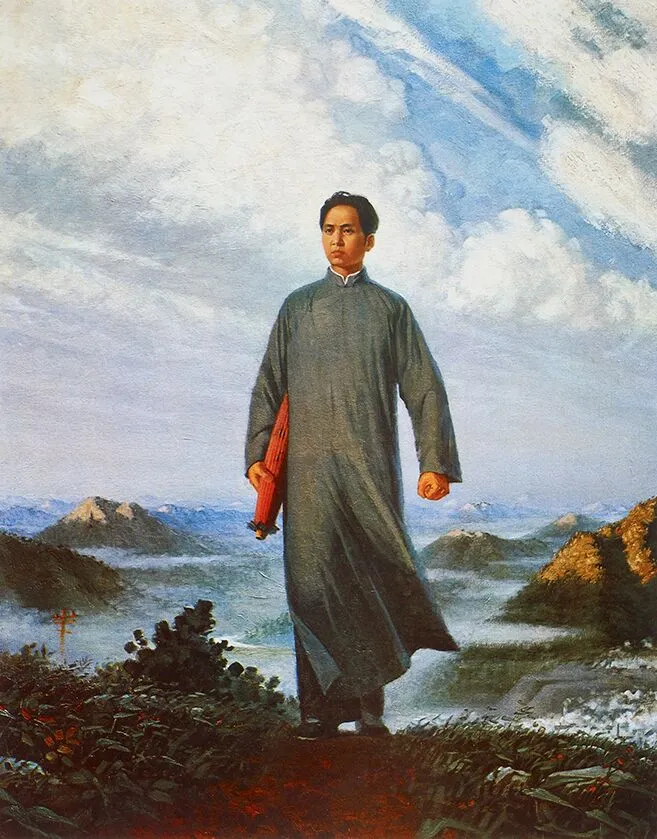
64
Chairman Mao en Route to Anyuan
Artist unknown (based on oil painting by Liu Chunhua), Chinese (PRC), color lithograph, 1969 CE, 2’ 4”
Socialist Realism, set in 1920’s, 900+ million copies made, Mao was over 70 years old, after Great Leap Forward (needed to become popular), idealized Mao, atmospheric perspective, European style (technology), umbrella (protection), pose also western
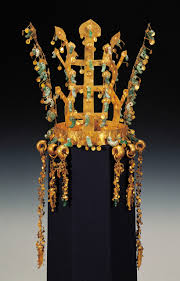
65
Gold and Jade Crown
Korean (Silla Kingdom), metalwork, 5th - 6th c. CE, 1’ 4”
Shamanistic society, depicts trees, fruits, deer antlers (sacred), used for certain rite and ceremonies by shamans, found in burial of a likely shaman
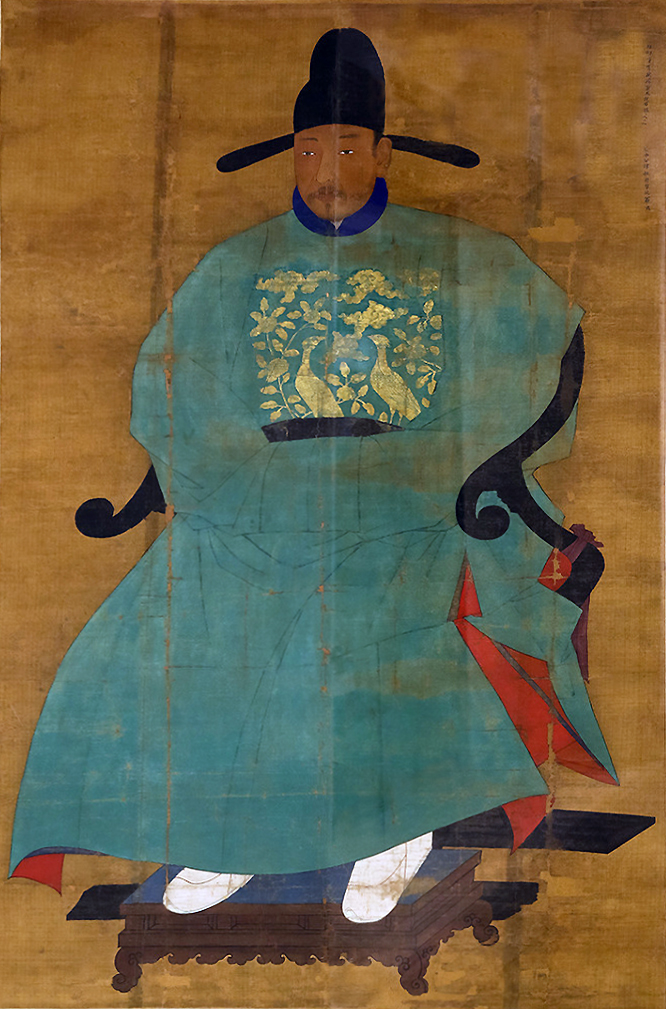
66
Portrait of Sin Sukju
Imperial Bureau of Painting, Korean, hanging scroll (ink & colors on scroll), 15th c. CE, 5’ 4” x 3’ 6”
Peacocks show status (but not an imperial status; dragons), advisor to emperor who promoted Confucianism, sinification (based on Chinese Bureaucratic portraits), idealized man
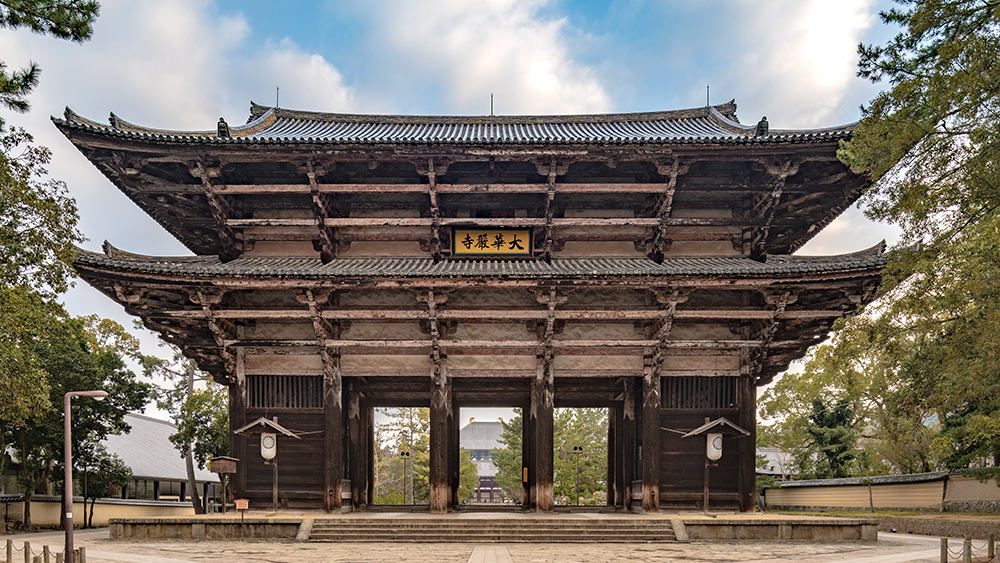
67
Todaiji
various artists (sculpture Unkei & KeiKei - Kei School), Japanese, bronze, wood, ceramic-tile, 743 CE; rebuilt 1700 CE, Nara (Japan), 83’ tall
Buddhist temple, South Gate - made with Japanese woodwork (sashimono), next to deer park, Chinese influence (pagoda-like rooves)
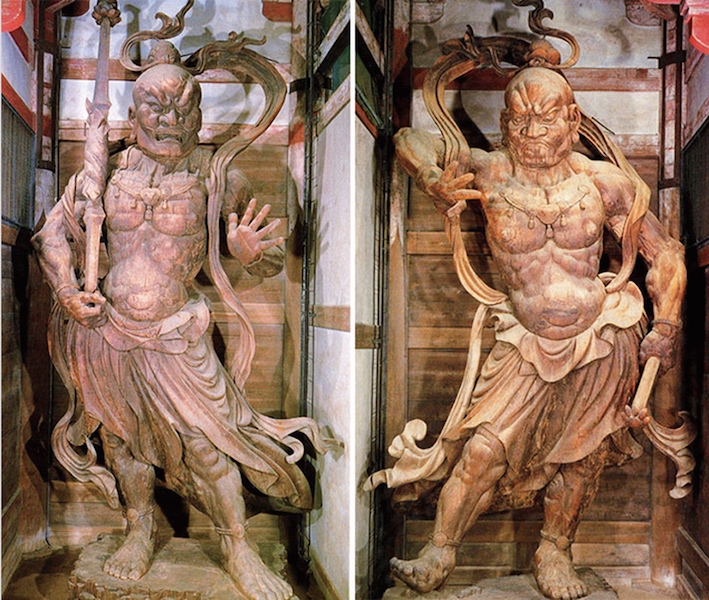
67 - sub-piece
Nio Guardian Statue
Nio: Japanese Buddhist aggressive guardian to protect temples, Symbolize life & death (open & closed mouth), hollow on inside (filled with sacred scrolls), movement to the statues, 26’ tall
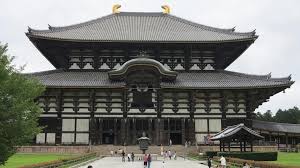
67 - sub-piece
Great Buddha Hall
Kondo: a hall used for Buddhist temples, smaller than original but still largest surviving wooden structure, Buddha housed inside, 80’ columns, phoenix on top (symbols of protection), gift to Japanese people (display of power)
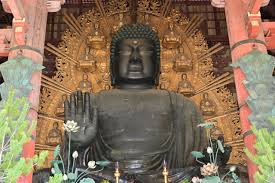
67 - sub-piece
Great Buddha
50’ tall, Daibustsu (Japanese for great Buddha), Varicona: Buddha of infinite wisdom, all the available bronze in Japan used, 3 years to complete hair, Indian influences (hand, urna, etc.)

68
Night Attack on Sanjo Palace
Japanese (Kamakura), hand scroll (ink & color on paper), 1250 - 1300 CE, 18” x 25’
read in sections to tell a story, emaki (hand scroll 11th-16th century Kyoto), painted 100 years after Heiji period (depicted), one in a set, militaristic (Otoko-e), Yamato style with stylized figures, simple faces, bright pigments, aerial view
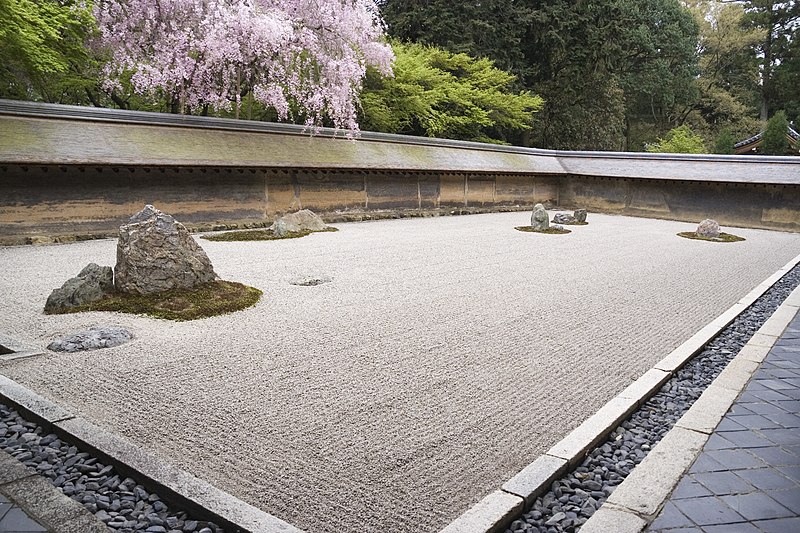
69
Ryoan-ji (wet and dry gardens)
Japanese (Muromachi Period), rock garden, 1480 CE; current design 18th c., Kyoto (Japan), 100’ x 33’
for Zen Buddhist meditation, immersed in nature, get in touch with peacefulness & restraint, dry garden - 15 rocks but only 14 can be seen at a time, some grouped in islands, reaching perfection = seeing all 15 ( unachievable but strive), rocks raked around islands but overall horizontally, wet garden - pond w/island which has sakura
